HIS NEW MATERIALS GO TO SPACE
 BY CARRIE BLACKMORE SMITH
BY CARRIE BLACKMORE SMITH
THE SIGN MUSEUM’S BRIGHT FUTURE
BY STEVEN ROSEN

 BY CARRIE BLACKMORE SMITH
BY CARRIE BLACKMORE SMITH

Considering a neurotoxin to prevent lines and wrinkles? Dr. Mona can help you weigh your options.

Mona S. Foad, MD, is a boardcertified Dermatologist and founder of Mona Dermatology in Kenwood

How was Botox discovered?
Onabotulinum toxin A (most well known as the brand name “Botox”) has been used since 1978 when it first received FDA approval to treat crossed eyes in the ophthalmology community. It was not until 1992 that it was first reported for cosmetic use. Botox has since become a household name with nearly 4 million people receiving cosmetic Botox treatments each year.
Why is it so popular?
Why is this such a popular treatment and why are more and more people doing it? Botox and other neurotoxins are quick, no-downtime procedures that work by stopping muscle movement. They help to prevent lines and wrinkles from forming and are a popular way to prevent aging. Although the most common areas to be treated are the lines between your brow, your forehead lines, and your crow’s feet, neurotoxins are also used to enhance lips, lift up the corners of the mouth, soften your neck lines, and treat a host of other areas. “Although neurotoxins are great for treating the existing lines you may have, we are also seeing people use it at younger ages to prevent the lines from even forming in the first place,” says Dr. Mona.
How to choose the right treatmeant for you. There are several brands of neurotoxins on the market, although Botox Cosmetic is the most well-known and has the longest track record: it has been FDA-approved since 2002! Recently, a new product has been introduced that can last longer than the other neurotoxins on the market. Daxxify has a patented technology that allows it to set in faster and last longer than traditional toxins. Mona Dermatology is proud to be the first Dermatologist in Cincinnati to offer Daxxify.
When deciding if neurotoxins are right for you, it is important to choose a licensed and trained medical professional who understands facial anatomy and can help you choose the right toxin, such as a board-certified dermatologist or plastic surgeon. In the hands of the right injector, you can achieve beautiful, natural results.
If you are interested in learning more about anti-aging injections such as Botox and Daxxify, schedule a consultation with the board-certified team at Mona Dermatology by visiting monadermatology.com.


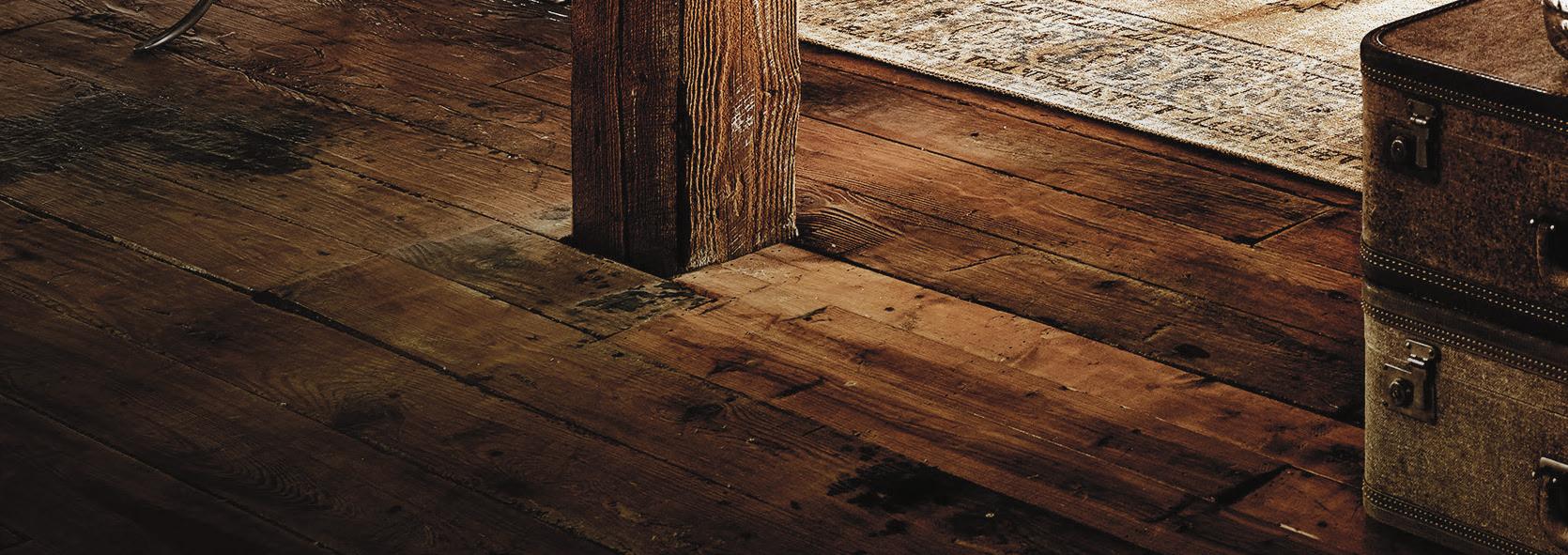






At the Florence WormaldHeart & Vascular Institute at St. Elizabeth, our heart expertsbring a singular focus on you, with compassionate care andminimally invasive proceduresto addressyour specific needs. Nationallyrecognized for excellence in heart care, our team of specialistscollaborates closelyto provide heart care personalized just for you.





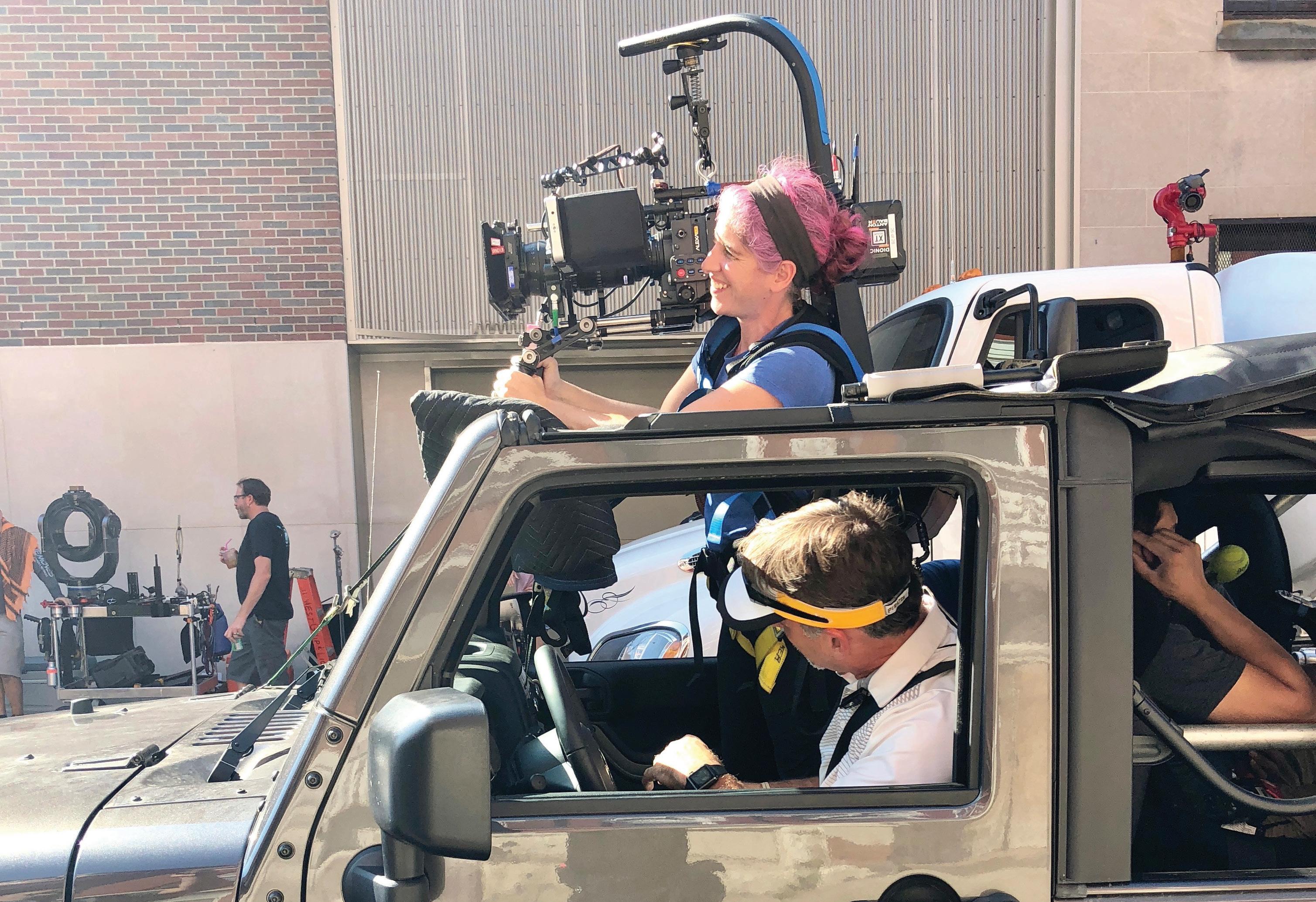
How the Queen City became a monster hit with filmmakers.
44

The American Sign Museum has become a pop culture phenomenon. Now the organization is in the home stretch of a $5.5 million project that will expand its Camp Washington footprint.
BY STEVEN ROSENThe Cincinnati native’s Oros cold-weather technology is being tested by the U.S. Department of Defense, the Blue Origin space program, and outdoor apparel consumers. And he’s just warming up.
BY CARRIE BLACKMORE SMITH

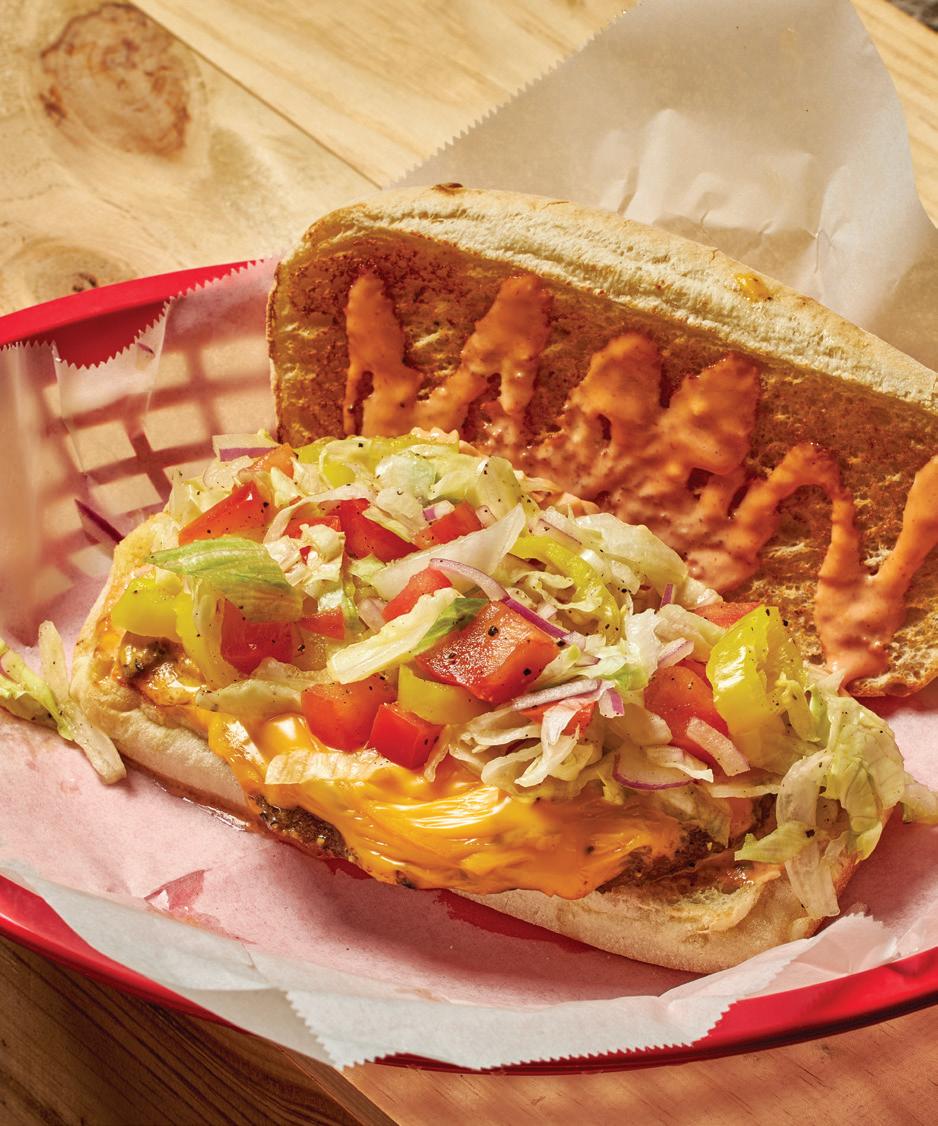

(MK) Hennigan of In the Curious Kitchen
PANTRY Daylily Deli, ColumbiaTusculum
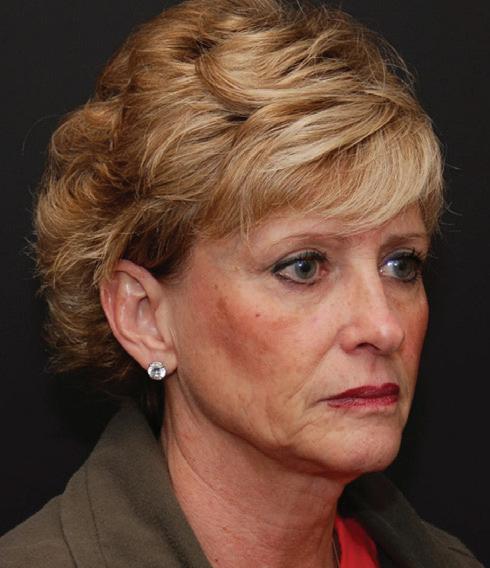




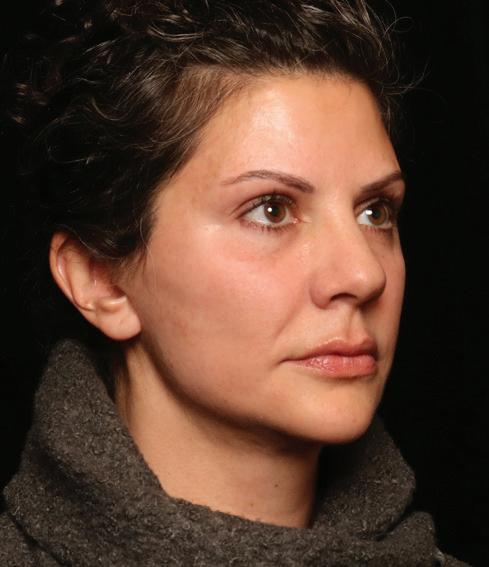
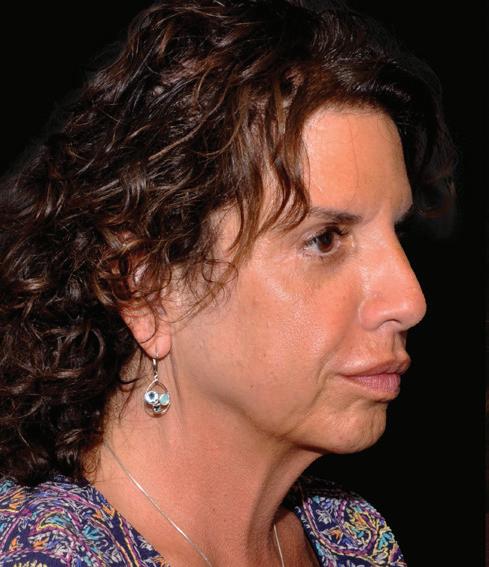


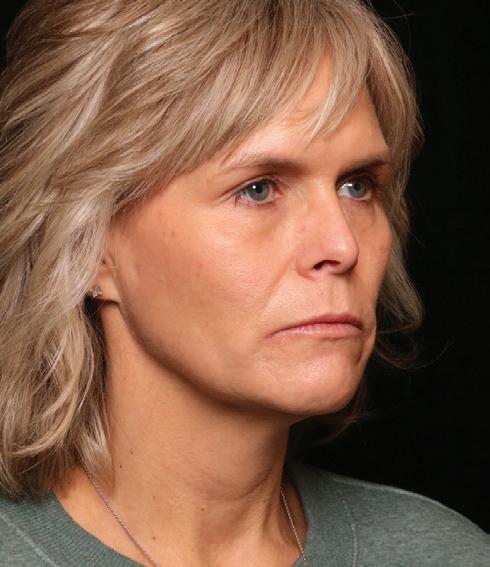
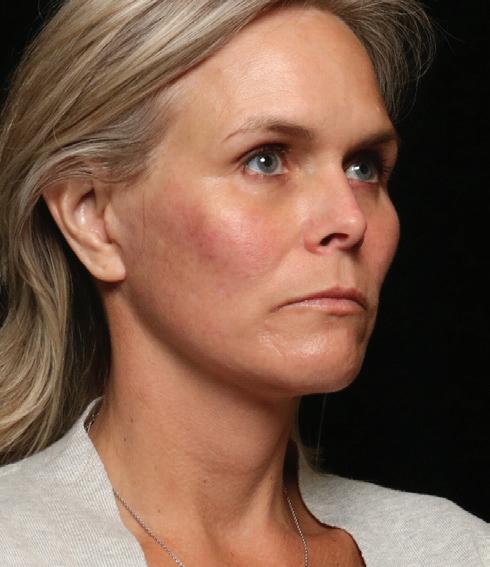



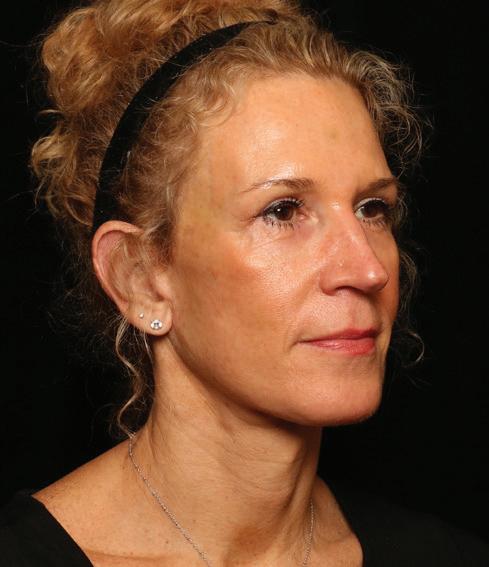

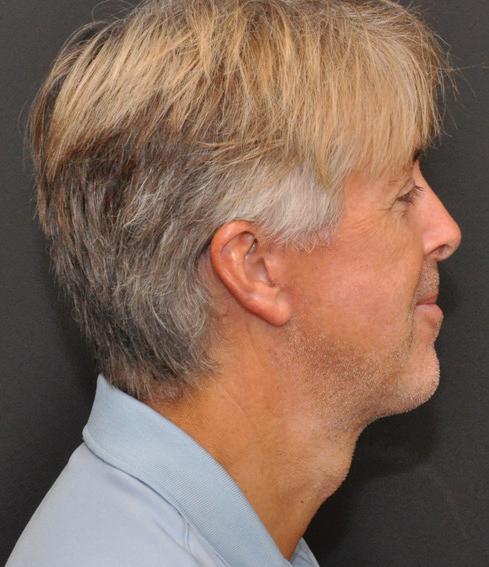







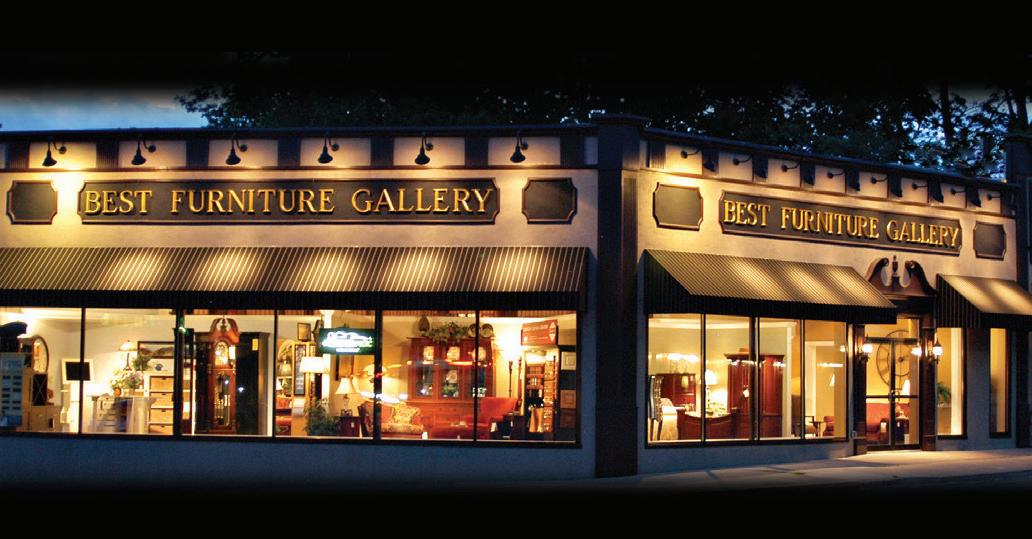


DIRECTOR OF EDITORIAL OPERATIONS

Amanda Boyd Walters
SENIOR EDITOR Aiesha D. Little
ASSOCIATE EDITOR Lauren Fisher
DIGITAL EDITOR Sam Rosenstiel
SOCIAL MEDIA MANAGER Kane Mitten
CONTRIBUTING EDITORS Jim DeBrosse, Kathleen Doane, Jay Gilbert, Lisa Murtha, Laurie Pike, Kevin Schultz, John Stowell, Linda Vaccariello, Jenny Wohlfarth, J. Kevin Wolf


IN MEMORIAM Albert Pyle
EDITORIAL INTERN Jaylin Leslie
DIGITAL INTERN Emma Helbling
SENIOR ART DIRECTORS Jen Kawanari, Emi Villavicencio
ASSISTANT ART DIRECTORS Carlie Burton, Logan Case, Jessica Dunham
JUNIOR DESIGNER Wesley Koogle
PHOTO CO-OP HATSUE
CONTRIBUTING ARTISTS Lance Adkins, Wes Battoclette, Aaron M. Conway, Chris Danger, Andrew Doench, Devyn Glista, Chris von Holle, Jeremy Kramer, Ryan Kurtz, Lars Leetaru, Marlene Rounds, Dola Sun, Catie Viox
PRODUCTION DIRECTOR & IT SYSTEMS ADMINISTRATOR Vu Luong
DIRECTOR Geralyn Wilson CIRCULATION MANAGER Riley Meyers







IN A LOT OF WAYS, CINCINNATI’S
INDUSTRY MIRrorsour overall cultural identity across the past 30 or 40 years. Back in the 1980s and ’90s we were happy to oblige the occasional Hollywood crew who wanted to use city buildings and streets as stand-ins for old, rundown parts of New York City and Chicago. Hey, at least they noticed us for something!
There were a few nice rewards for Cincinnatians in those days, like the Rain Man toothpick scene in Pompilio’s or Tom Cruise and Dustin Hoffman driving along Columbia Parkway (“97X, bam! The future of rock and roll!”). We could tell our college friends or out-of-town relatives that was our city and our favorite radio station. Otherwise we didn’t really claim ownership of the grungy, gritty visuals filmed here for Little Man Tate, A Rage in Harlem, Lost in Yonkers , or Eight Men Out . In essence, we stood in for Anywhere, U.S.A.
Today, however, Cincinnati’s old-fashioned urban architecture is now “historic,” our colloquialisms are “quirky,” our flyover country location is “authentic,” and our film community is an “economic engine.” Thanks to the tireless work of Kristen Schlotman and her Film Cincinnati organization, more and more people are able to live here and work in the film production industry as a career. As you’ll read in “The Movies Invade Cincinnati” (page 30), this region has emerged as a favorite location for filmmakers due to both the state of Ohio’s film tax credit program (which Schlotman wants increased) and the quality of local production talent they can hire.
When you think about the top actors who have come here to make movies in the past 10 years or so, the awareness switch has certainly flipped: George Clooney, Ryan Gosling, Don Cheadle, Cate Blanchett, Colin Farrell, Nicole Kidman, Robert Redford, Emilio Estevez, Zac Efron, Mark Ruffalo, Anne Hathaway, Timothée Chalamet, and Robert De Niro. All we’re missing is one of those comic-book blockbusters that come to town and blow everything up.
The city has grown from Anywhere, U.S.A., to Cincinnati, U.S.A., in the past few decades. And in large part we have the movies to thank.
JOHN FOX EDITOR-IN-CHIEF



When contributing writer Patrick Murphy set out to find the crew members who make Cincinnati movie magic behind the scenes (“Odd Jobs,” page 40), he didn’t have to look far. “Everyone knows everyone,” he says of the close-knit network of professionals. “Almost like high school. It was always funny to hear them ask me, So who else have you interviewed?”
In “Winterfilm Calls Action” (page 38), Mackenzie Manley writes about the annual filmmaking challenge. “Cinema has the ability to shift perspective, connect communities, and provide a temporary escape,” Manley says. “It’s so important for filmmakers and creatives to have spaces like Winterfilm to experiment and connect with one another.”


As a kid, contributing artist Mike Gambriel owned a collection of VHS tapes large enough to fill his bedroom. Creating film posters, he figured, would be a “natural fit.” The UK-based illustrator crafted our cover, integrating seven Queen City movie icons. “I haven’t actually seen any of these movies,” he admits. “But I plan to very soon!”
In December’s Best of the City, we listed the wrong phone number for Activate Brain & Body, one of our Best Workout Spots. The correct number is (513) 793-2724.
Collaboration is often talked about. But at the University of Cincinnati College of Medicine, it’s the very real basis for advanced cardiac care. From complex diseases to common issues, Dr. Louis B. Louis IV and Dr. Charles Hattemer and the UC Physicians heart team collaborate to provide the most effective treatments.



It’s a stop, listen, and discuss approach. One that leverages the latest research, the best guidelines, the most advanced technology—and a veritable army of health professionals and clinicians, all working together for better outcomes for us all.


Indispensable medicine, right here in Cincinnati.


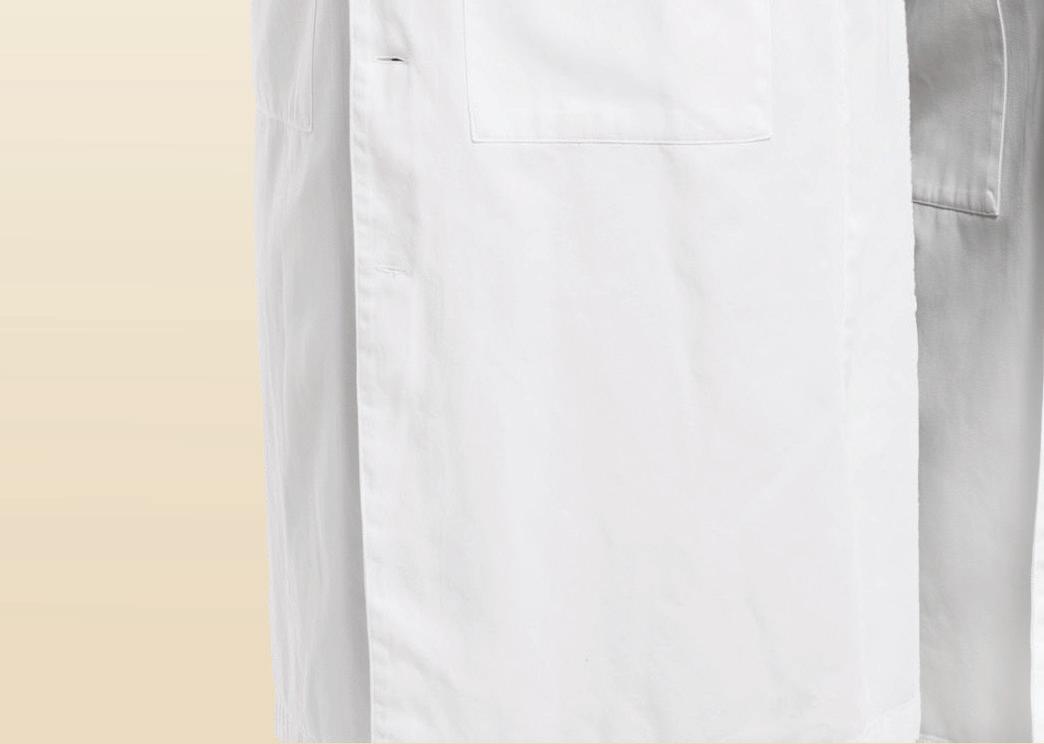
College of Medicine



CARING HAS NOT ALWAYS BEEN A calling card for candidates elected to judgeships in Hamilton County. Hard-nosed? Yes. Conservative? Yes. But Jennifer Kinsley, a law professor at Northern Kentucky University, has spent her life busting stereotypes. In the November election for First District Court of Appeals, which covers Hamilton County, she beat out an incumbent with a well-known conservative name, Robert C. Winkler, to win the seat vacated by a retiring Republican judge.
At 47 and undeniably blonde, Kinsley begs comparison with the courtroom success of Elle Woods, the underestimated heroine of the hit comedy film Legally Blonde. “People make all kinds of assumptions about other people based on outward appearances, their gender, their age,” she says. “But I’ve always just tried to show up and do the best I can. People quickly realize that what they assumed about me wasn’t fair.”

After high school in Jacksonville, Florida, and an undergraduate degree at the University of Florida, Kinsley planned on being a high school English teacher and applied to the master’s program at Columbia University. Almost on a whim, she also applied to Duke’s law school as a backup.
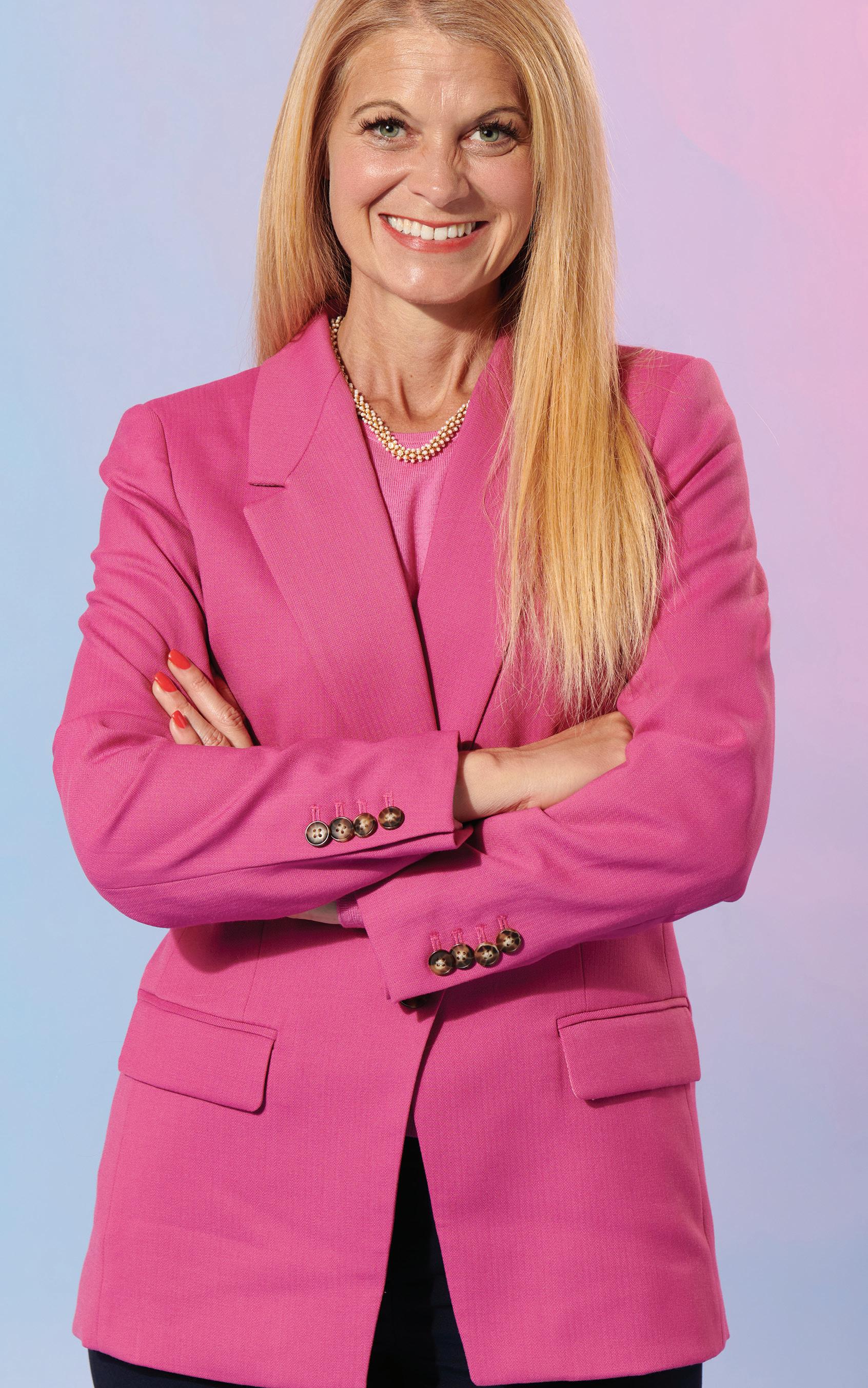
She failed to get into Columbia, but Duke Law accepted. Within a year of graduating in 1999, she joined Lou Sirkin’s prestigious Cincinnati law firm and worked on some of the toughest and most controversial constitutional rights cases in the nation.
“I hired her after talking to her for less than 10 minutes,” says Sirkin, who has no doubts that Kinsley will succeed as an appellate court judge. She brings to the job “tremendous writing skills, tremendous understanding of the law, and a great capacity to listen to both sides,” he says. “She’s just oriented to being a person who does the right thing, and that includes the right interpretation of the law.”
Kinsley credits a big part of her success to Sirkin, whom she worked with from 2001 to 2012 before leaving for NKU. In the nation’s legal circles, his name is synonymous with defending First Amendment rights of free expression. He’s perhaps best known here for successfully defending Dennis Barrie, then director of the Contemporary Arts Center, for exhibiting Robert Mapplethorpe photos in 1990, many of which had themes of gay and sadomasochistic eroticism. The case pitted Barrie and Sirkin against the man dubbed locally as “Mr. Clean,” Simon Leis, the hardline Hamilton County prosecutor and later sheriff who made it a personal crusade to cleanse the county of all
traces of public sexuality.
Follow Ohio’s First District Court of Appeals at firstdistrictcoa.org.
Kinsley has dealt with many of her own challenging and controversial cases, often in tandem with Sirkin. But in nearly every case, she says, she sought to protect the constitutional rights of the victims as well as fi nd a solution that worked for everyone. Her most talked-about case, however, pitted her and a team of attorneys against a Texas statute in 2007 that criminalized the distribution and possession of sexual aids, including sales parties sponsored by Cincinnati-based Pure Romance. Several other conservative states had similar laws on the books then. Kinsley and Sirkin successfully argued their case before a federal appeals court, which ruled that the state of Texas had no right to impose its public morality on intimate private conduct.
While it’s rare in Hamilton County that a defense lawyer is elected to a judgeship, Sirkin says Kinsley is part of an emerging judicial trend, noting that President Biden has appointed a large number of former public defenders as federal judges. Kinsley may have been the person most surprised by her election victory.
“I have a lot of people to thank,” she says, adding that she feels the need to pass that devotion forward. “I’m not here for myself. I’m here for a lot of people because I carry a lot of people with me.”
Sisters Jenni and Jess Button take over 20th Century Cincinnati, the long-running show of Mid-Century Modern decor and housewares. It’s at the Sharonville Convention Center February 25 & 26, celebrating Edgar Sforzina, who designed Union Terminal’s interiors. queencityshows.com

Cordell, Kentucky, native Ricky Skaggs began playing in bluegrass legend Bill Monroe’s band when he was still in first grade, before joining Ralph Stanley’s famous outfit. Now 68, the 15time Grammy winner and Country Music Hall of Famer hits the road with a band he thinks might be his best ever, stopping at Memorial Hall on February 10.
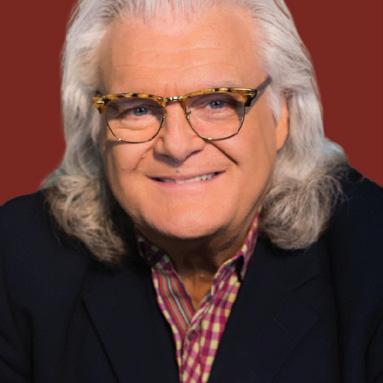

You grew up in eastern Kentucky listening to old-time country on Cincinnati radio stations. What impact did that have? We could certainly get WLW and WCKY in Lawrence County at night. I remember hearing it, and at that time Cincinnati was a hotbed for bluegrass; the Osborne Brothers and The Stanley Brothers would travel through there quite a bit and play.
Cincinnati’s King Records famously embraced both R&B and bluegrass with The Stanley Brothers’ early recordings as well as James Brown. Can you recall listening to King Records artists as a kid? Oh man, as soon as they came out we would get them! Ralph Stanley used to tell me stories about seeing James Brown come into the King studio and be in the
control room groovin’ while Ralph and his band were singing their songs. We loved King Records. When I recorded my first records in Cincinnati, it was with Jack Lynch, who Ralph knew. We did our first record there, Tribute to The Stanley Brothers. I was 15 or 16 years old.
Country music has gone through so many changes over your career, but you’ve stayed true to traditionalist music. I was cool with others singing about beers, babes, and trucks, but that just wasn’t me. I wanted to be honest and true to my faith and to the music as well. I always said I would never record a song I couldn’t look my mother in the eyes and sing.
You’ve been inducted into more than half a dozen halls of fame, typically the sign of looking back. What keeps you motivated?
I just feel like I’m not through. I’ve got probably the best bluegrass band I’ve ever had. They’re incredible players, and you don’t have to tell them what to play. It’s about giving them a place to create and be who they are.
—GIL KAUFMANREAD A LONGER INTERVIEW WITH RICKY AT CINCINNATIMAGAZINE. COM


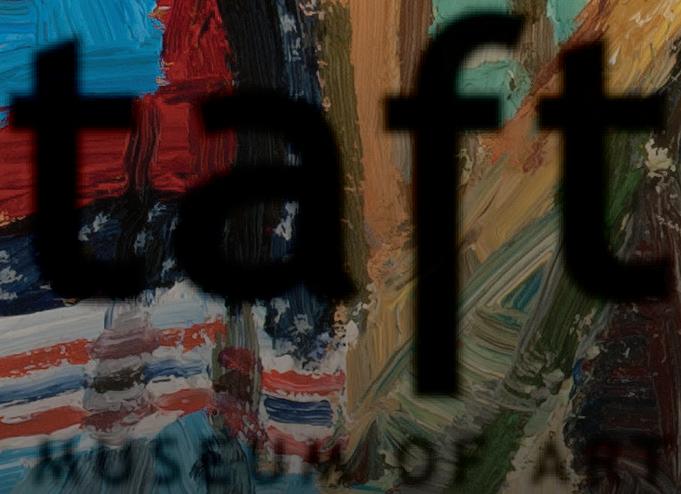


Tell us about Designerae. I started in 2015 as a regular hair stylist at a salon in Clifton. I didn’t have a lot of clients at that time, but I used to get a lot of calls for locs [dreadlocks]. This year, I’m going to be exclusively doing locs. What are the benefits of being a loctician versus a stylist with a broader list of services? A lot of the other services I was offering take more time, and I have some services in the loc industry that I didn’t have time for because I was trying to accommodate all these other services. The mission of Designerae is to promote healing. How can haircare promote healing? Our hair speaks, and a lot of people don’t realize that. I can look at somebody’s hair and tell you if they have a medical condition, or if they just had a baby, or if they had stress in their lives. I had a woman come to me and say, “I’m so worried. My hair is coming out in patches. I don’t know what to do.” She had big welts and patches on her head, everywhere. Her locs were just falling out. At the time, I had never seen anything like that. I called my mentor here. She’s a trichologist— somebody who specializes in scalp conditions. I showed her a picture. She said, “It’s alopecia areata,” which is where stress causes bald spots. “Something is going on with that young lady.” I asked [the client], and she just broke down in tears. “I can’t find a job. I’m really struggling financially right now.” I was able to style her hair to hide those patches, and we worked together. I’m seeing her every month, and I literally was able to watch her hair grow back. She found a job. She stopped stressing. [She’s] getting back to feeling confident and feeling secure and loving on herself more, being aware that how she feels inside will be reflected outside.

















 —JACLYN YOUHANA GARVER
—JACLYN YOUHANA GARVER





Planned Parenthood Southwest Ohio provides reproductive care and education services throughout 23 counties in southwest Ohio and northern Kentucky. Our services include:
• pregnancy testing
• STIs testing therapy




• birth control services and relationship education
later, the store is now located in Corryville, and the candles themselves have changed.
Gray discontinued that original grapefruit candle to make way for new scents, and today she offers nine signature scents, plus seasonal candles, largely created based on travel and experiences. Take her personal favorite scent: Frida, named after Frida Kahlo. Gray used to live in Phoenix, and she wanted a candle to remind her of that time of her life. “It smells like spicy margarita—sunset-y, outdoorsy,” she says. “Every single one of our scents, I create myself. I mix them all myself. [They] all have a story.”


THE UNOFFICIAL
78 candles was in 2014, when owner Erikka Gray made her first creations. At the time, it didn’t quite work out.

“I took a bit of a pause,” she says. “Because they were not very good.”
Then, in 2015, about to get married, she looked at all the candle-making stuff she had left and thought, Why not give it another go? I’ll get rid of all this wax and have a handmade gift for wedding guests
Her wedding logo topped the 4-inch round tins, and the candles smelled like grapefruit and sage. Guests loved them, and Gray figured maybe it was time to give candle-making another try—on a slightly larger scale. Then based in Covington, her small business, District 78, specialized in vintage clothing, but Gray shifted the focus to candles and home items. Eight years
District 78’s bestselling candle, coconut + pineapple, is inspired by Gray’s honeymoon in Bali. She wanted the scent to be reminiscent of the beach and the fresh ingredients used in the cocktails and smoothies she drank there daily. “I try to make scents that are complex and tell a story, too,” she says.
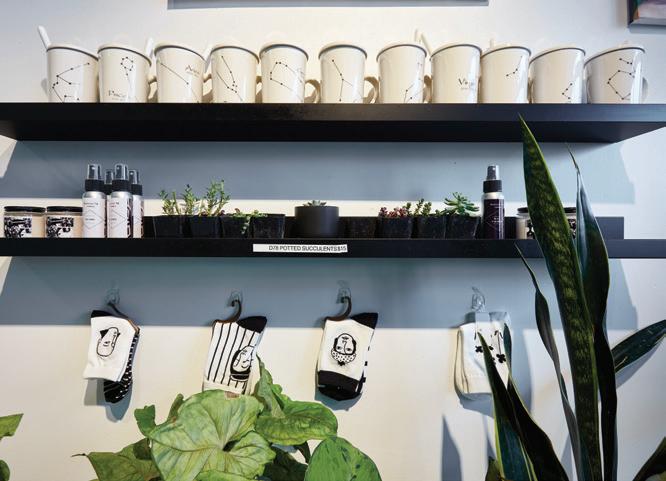
Customers can also make their own candles at the shop. If a scent isn’t working out, Gray is happy to point customers in the right direction. It’s an ability she equates to cooking: You need to know what ingredients work together, otherwise the cake won’t rise. She recalls a recent customer who needed a bit of a hand.
“It was a sweet kitchen scent they were trying to mix with a really outdoorsy, grassy scent, and it just did not blend,” she says, “like a jellybean you get as a joke. Why am I eating grass with buttercream on it?”

IF CARRIE BRADSHAW DECIDED TO MOVE TO NORTHERN KENTUCKY, WE know exactly where she’d hang up her Manolo Blahnik Hangisi pumps: Inside the massive walk-in closet crowning this condo at The Ascent.

Perched on the 14th floor and clocking in at more than 3,000 square feet, the three-bedroom unit wouldn’t be at all out of place in any Sex and the City scene with its panoramic skyline views, ultra-modern feminine finishes, and Manhattan-quality amenities.
This space isn’t bashful. The entryway’s floor-to-ceiling nude wall sculpture (it’s tame…ish) is just the first of several art pieces scattered like spicy little Easter eggs throughout, from the lipstick-wallpapered half-bath to the full-frontal-à-la-pop-art in the guest suite. But don’t mistake all these bold artistic touches for raunchiness—it’s all in good taste, throwing color and interest
 —LAUREN FISHER
—LAUREN FISHER
into a space that’s otherwise metallic and monochromatic. Smart storage solutions throughout this space tame clutter and allow the fine details to shine. Even the unsexiest household tasks are elevated. Fluffing and folding are a little less boring in a well-appointed laundry room. Working from home isn’t so bad when your office window looks out over the treetops. In the warmer months, just open up the sliding glass doors to invite in the breeze and enjoy the view of your kingdom from the comfort of your private balcony.
Life at the striking Daniel Libeskind-designed building comes with plenty of perks, like the sauna, massage room, wine lockers, and theater (in addition to your run-of-the-mill amenities like a pool and gym). But you’d be hard-pressed to find a reason to leave the luxe confines of the condo itself. Between the soaking tubs, the integrated sound system, and the in-unit wine room, we couldn’t fault you for spending most of your nights—fine, maybe all of your nights—in.

I’m sorry to hear of the passing of Albert Pyle, the original Dr. Know. What advice did Mr. Pyle give you when handing off his baton? I realize you don’t do personal questions, but consider: My question is local, it’s rather inconsequential, and you know the answer. So it qualifies, right?
—WHAT WAS UP, DOC
DEAR WHAT: Your logic is undeniable, even though it intrudes on the Doctor’s aggrieved weeping for Mr. Pyle. In other words, you have me by the bawls. Please, do not moan! A tortured pun is surely “what Albert would have wanted.”
The process began with a simple lunch invitation. We met at Paula’s Café on East Fourth Street (another lost Cincinnati treasure), where Mr. Pyle carefully sized up his potential heir. It was probably our shared hairline that did the trick. He was forthcoming about his methods for uncovering what may appear to some as minuscule and pointless information but which he saw as essential Cincinnati. He also gave advice on the proper way to approach a source: softly. Some people, he warned, especially in government, will clam up when contacted. They fear they’re being targeted by an investigative journalist sniffing around for a scandal. You need to reassure them, he said, that the Doctor never, ever works that hard.
Did Albert Pyle establish the formal and patronizing persona of Dr. Know from the start, or did that develop over time? I guess I’m wondering how much of the character was—and under your tutelage, continues to be—a reflection of his own personality.
—ALTERED EGO
DEAR ALTERED: Should one shudder at the accusation of being characterized as “formal and patronizing,” or might one, after careful deliberation and reflection upon the question— having come, after all, from an average reader such as yourself—deign to call it flattery? Well, let us consider…
Photographs of Mr. Pyle reveal his regular practice of wearing bow ties. This is a tell. A bow tie is as clear a cultural signifier as a Metallica T-shirt. The “formal” categorization, therefore, carries some heft. We furthermore have it on good authority that Mr. Pyle’s ties were always self-tied; a clip-on would be appropriate only at Olive Garden. Is that “patronizing?” Well. We must clearly separate, however, the Doctor’s persona on the page from the one in the flesh. Mr. Pyle was universally admired as a personable and gregarious presence, equally in touch with Homer’s Odyssey and Homer Simpson.

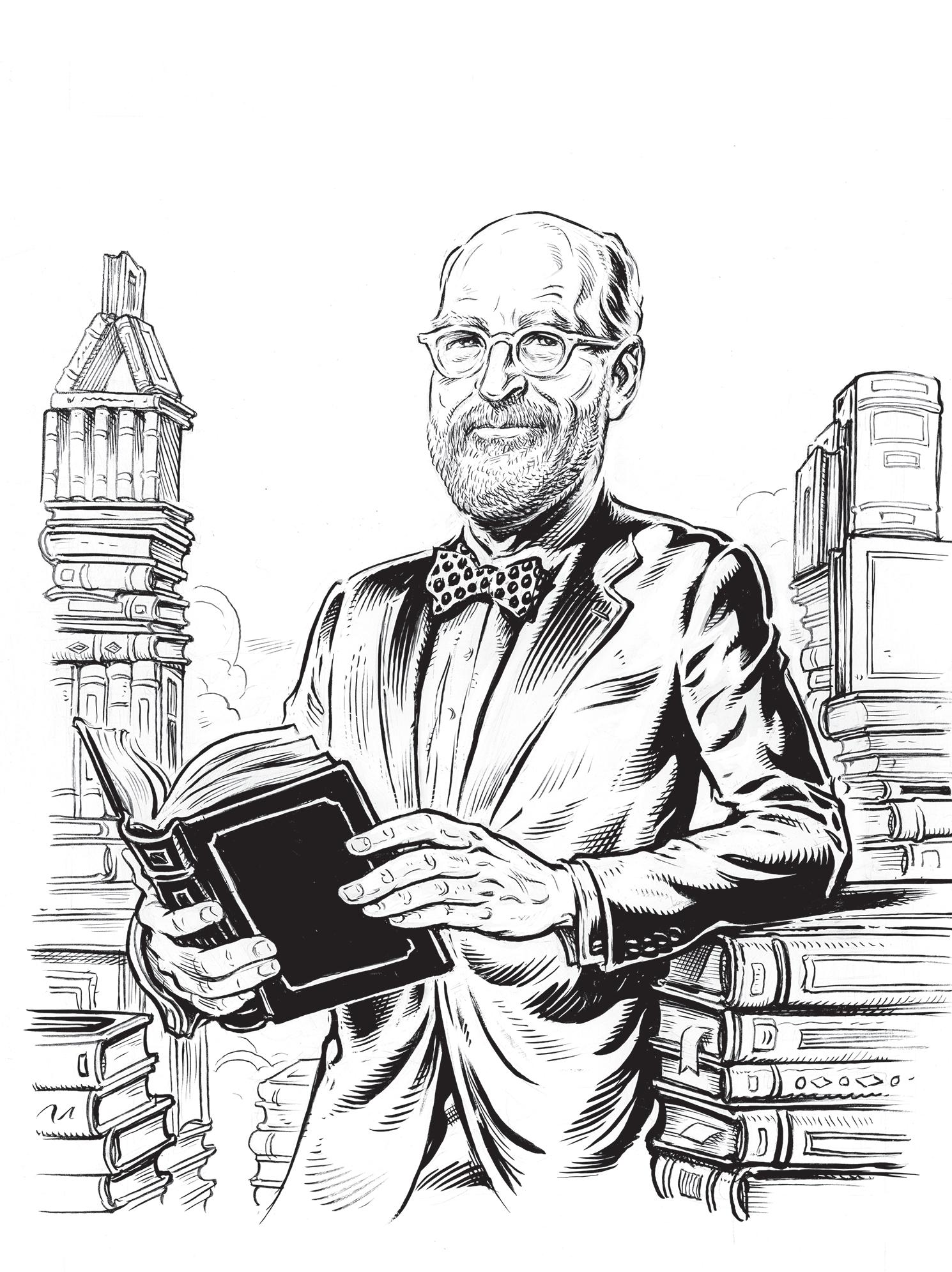
You didn’t really answer the question about whether Albert Pyle started this column in 2008 as the Dr. Know we know or as someone different. In its style, how does his very first column compare to the ones we see today?





















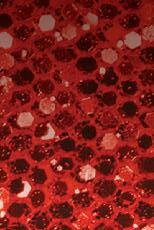














One may begin to suspect that the Doctor has fabricated this month’s questions rather than relying on reader submissions, something that neither he nor his predecessor has ever considered. Ahem.



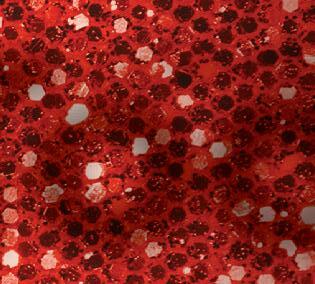



The column debuted in October 2008. It fi rst addressed the typical confusion of a Cincinnati newcomer over the corporate name Fifth Third. Explaining the 1909 merger of Fifth National Bank with Third National Bank, the original Doctor (not yet referring to himself in the third person) volunteered a reason why the new name was not in numerical order: “Third Fifth sounds disastrously like someone settling into a serious binge.”
Another reader asked to settle an argument—this desk’s eternal burden—about whether the song “Hang on Sloopy” is the official anthem of Ohio. No, it’s “Beautiful Ohio.” “Hang on Sloopy” became, Mr. Pyle made clear, Ohio’s official rock song in 1985. We are the only U.S. state that’s created such a category, something he noted as “almost groovy.”
Despite Mr. Pyle’s real job as director of the downtown Mercantile Library for more than 20 years, it was your current Doctor who discovered that his former institution has our town’s oldest perpetually operating telephone number (513-621-0717; it was simply 717 in 1895). We mortals, alas, do not operate perpetually. All of us here at Cincinnati Magazine mourn the loss of Albert Pyle, comforted only by the knowledge that someone in Heaven is learning how to properly tie a bow tie.


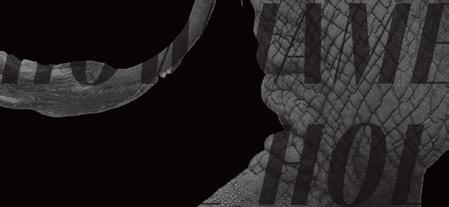





 By Jay Gilbert By Jay Gilbert
By Jay Gilbert By Jay Gilbert
I REALIZED, WHILE DIGGING INTO THIS STORY OF A FAILED CINCINNATI MOVIE COMPANY, that it’s a crappy movie itself. Betrayals everywhere! Heroes are really villains! Families and marriages explode! Zoo animals are involved! It all skids into a sad Hollywood ending, then suddenly pivots to something worse.




This crappy movie isn’t one of those “based on a true story” insults to history. Everything here really happened. It was more than 100 years ago, yet these treacheries could easily fit into episodes of Better Call Saul or Succession. As you follow along with my crappy screenplay, imagine which of today’s stars might play these real people.
TITLE: HOLLYWOOD ON THE OHIO, OR THE STORY OF HIGHLAND FILM


[Open on an aerial panorama of rural Ft. Thomas, February 1915.] This suburban expanse, known as the Highlands, is about to transform into the production powerhouse of the Highland Film Corporation. It will be the Midwestern capital of America’s latest passion: moving pictures, and the money in making them.
[Crossfade to group of well- heeled Cincinnatians and Kentuckians watching a lavish presentation.] “The Highland Film complex will rival Hollywood for attracting the industry’s biggest stars, producers, and dollars,” says the host. “And we’re going to build it in right here in Ft. Thomas!”





[Slowly dolly to the host.] James Ford, age 33 [Seth Rogen? Daniel Radcliffe?], comes from good stock. His father, Thomas Ford, is one of Northern Kentucky’s best-connected and wealthiest citizens. [Donald Sutherland? Robert Duvall?] The elder Ford has invited his business friends here to join him in throwing serious money at his son’s venture.

James Ford is persuasive. He dreams big. Over the next month he makes presentations [music accompanies busy collage] describing how Highland Film will cover 100 acres, include a 40-foot-tall production studio, and employ 500 people. He invites all investors to the upcoming groundbreaking in Ludlow.
Wait a minute [music abruptly stops] . Ludlow? Weren’t we talking about Ft. Thomas? Well, yes, says James, but landowners there jacked up their prices when they learned of these plans. “Besides, our team of experts considered several locales [resume the collage and music] and concluded that Highland Film shall instead purchase the Ludlow Lagoon, a popular amusement park and lake near Covington.”
[Cut to aerial panorama of Ludlow Lagoon, then to a closeup of stunned investors who thought their money was going to Ft. Thomas. Crossfade to closeup of Ludlow






Lagoon’s owners, looking twice as stunned.] One owner says hesitatingly, “Well, OK, I guess we’ll sit down and talk.”

[Shift to high-speed footage and chipmunk audio of James Ford and Ludlow Lagoon owners negotiating. A calendar page flips from March to April. Cut to Ford.] “ Folks, the Ludlow Lagoon deal is off , but that’s great news, because my team has found an even better site! Highland Film will now be in Edgewood. In fact, it will replace Edgewood!”
[Freeze-frame, then back to the calendar zooming in on April 28. Crossfade to Ford, surrounded by reporters.] “Ladies and gentlemen, this is my girlfriend, Erna Kline. [Emma Watson? How cool if we also sign Radcliffe!] We got married a year ago, but we kept it a secret because things were so busy! And guess what? She’s four months pregnant!”
[PRODUCER’S NOTE: Records show that in April 1915 Erna Kline was 15 years old. Recast the part. Millie Bobby Brown?]
[Fade up on newspaper headlines.] “Highland Film Company Reorganizes!” “President James Ford Demoted!”“Film production delayed.”
[Jump back to calendar. It flips seven months to January 1916. Crossfade to headlines.] “Highland Film Abandons Kentucky! Will Purchase Cincinnati Zoo!”
[Cut to James Ford at a press conference.] “ We’ve all known since last year that the Cincinnati Zoo has fallen on hard times and might close. But I am announcing today that the Highland Film Corporation will purchase the Cincinnati Zoo and construct our movie complex next to it. Highland will save the Zoo!” [Applause from the crowd.] “We’ll install a swimming pool to enjoy in summer! And an ice rink for winter! Massive electric lights will let us stay open at night! And furthermore…”
[Medium shot of applauding crowd, which blurs except for on man who stays in sharp focus. The one man noticeably not ap-

plauding is A.E. Burkhardt, the famous Cincinnati clothier. [Tom Hanks? Can we aff ord?] He’s a long-standing offi cer of Cincinnati’s Save the Zoo Commission, which opposes any sale of the zoo to a private commercial interest. Such a move would tarnish this gem in the Queen City’s crown. Burkhardt’s staunch opposition eventually prevails, dooming Ford’s offer.

[Begin another collage with music.] The Highland Film Corporation now proceeds to implode, along with the life of James Ford. He is accused of fraud—a lot of money has disappeared—and is sued from multiple directions. His wife fi les for divorce. Disgraced patriarch Thomas Ford dies. In his will he excludes James, dryly explaining that his son had already “received more than his portion.”
[Fade up epilogue text.] “James T. Ford, following the disintegration of his business and personal life, disappeared for three years. His whereabouts between 1917

Clearly makes a big splash!
and 1920 are unknown.”


[More text fades up, one line at a time.] “From 1920 onward, however...James Ford made quite a name for himself...Quite a notorious one...”
And that’s my crappy movie. As the closing suggests, the even crappier sequel—all completely true—is ready to go. Here’s a quick treatment.


From 1920 until his death in 1959, James Ford committed an astonishing parade of swindles and scams. During Prohibition, he posed as a crooked federal agent demanding protection money from bootleggers while he himself was bootlegging. He sweet-talked donations from Catholic churches for the printing of a national register, never published. Throughout the East and Midwest, he impersonated politicians; private investigators; police offi cers; and various crusaders against
gambling, drugs, cockfi ghting, etc. He skipped out on countless hotels and boarding houses.
We’ll never know James Ford’s greatest hits, because he got away with them— as opposed to the notoriety he sometimes achieved on his way to prison. He spent several stretches behind bars. But even his failures are impressive in their layered details.

The credits roll. We hear an old song: Oh, yes, I’m the Great Pretender Pretending that I’m doing well.



My need is such, I pretend too much I’m lonely, but no one can tell.
Did the failure of Highland Film trigger James Ford’s life of endless scams, or was it simply his fi rst Big Con? Was the disgrace of his father an accident or a plan? Before you answer, check out my movie’s deleted scenes.
Deleted Scene 1: James Ford had an older brother, Thomas Ford Jr., who died young. No, it’s not the clichéd story of Junior
Golden Boy who left us too soon, dumping an unbearable burden on the second son and making him go rogue. Thomas Ford Jr. was a serial check forger. He got caught passing bogus checks in Cincinnati, Chicago, Indianapolis, and probably elsewhere, but Daddy regularly covered the check amounts, paid the court costs, and eliminated any publicity. Ford Jr. died of “dropsy” at age 28, an official diagnosis probably also purchased.
Deleted Scene 2: Another brother, the actual second son, died at age 33. Peter Ford didn’t forge checks, but his father had to repeatedly rescue him from another movie role cliché: the town drunk. Peter’s rap sheet for drunk and disorderly conduct rivaled James’s for scams. Peter died of “heart trouble,” or so they say.
Thanks for watching my crappy movies. Please click “Thumbs Up” on Rotten Tomatoes, and remember: Negative reviews are all fake bots. Scammers, all of them.





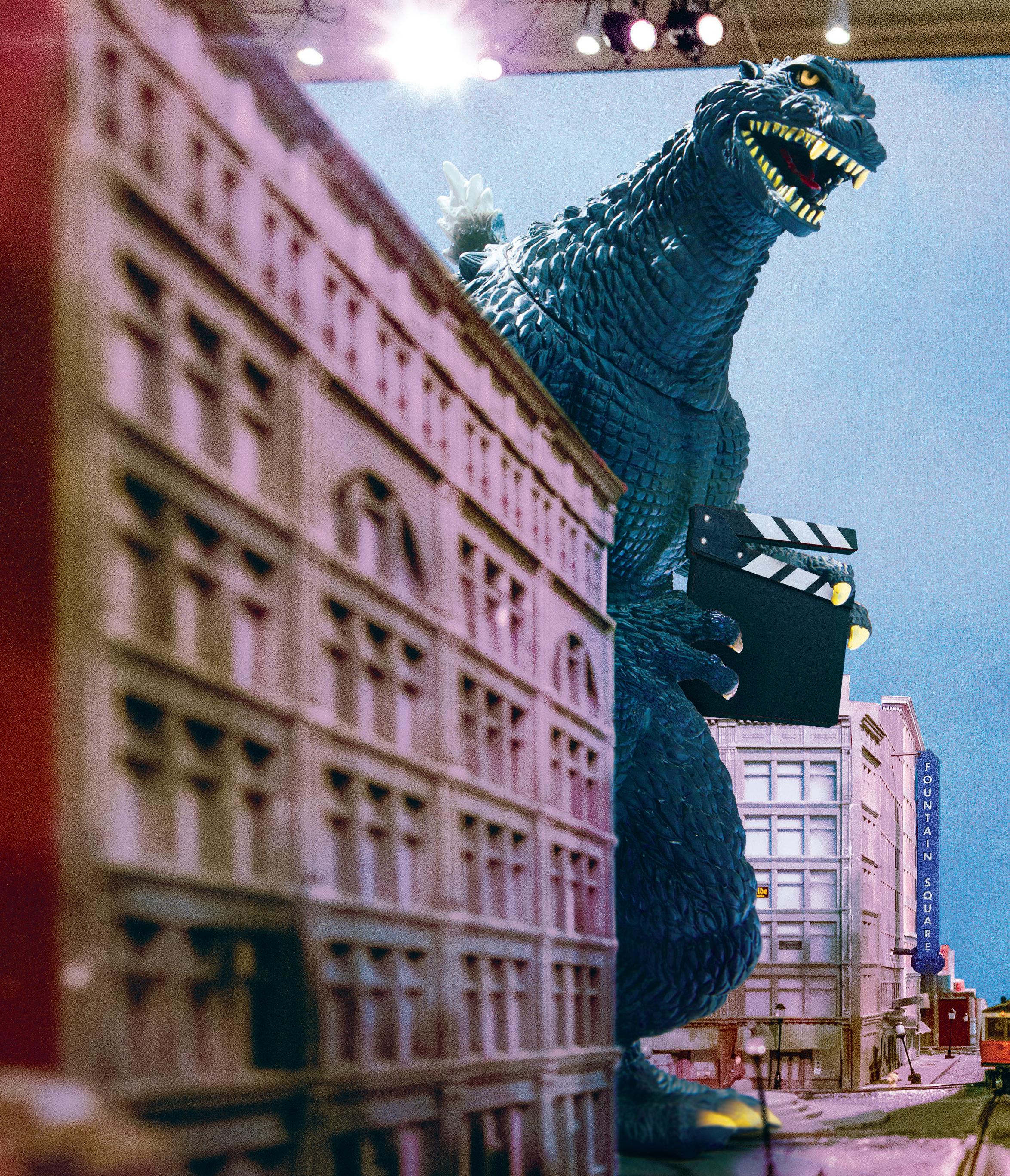


With all the film crews around nowadays, Cincinnati could start a streaming service featuring solely movies backgrounded by our local scenery. Hollywood’s recent attentions excuse us from forgetting Cincinnati once boasted its own thriving film industry, churning out feature-length, homegrown entertainments.
“Moving pictures” first transfixed Cincinnati audiences via the legendary Edison Vitascope projector in 1896. Shown in the theater of Heck & Avery’s Vine Street Dime Museum, Vitascope pictures caused a sensation and sold out that auditorium for months. Moving pictures proved far more popular than other acts billed at Heck & Avery’s, which included a bevy of young ladies pecking away in a typing contest, a stage full of divorced women explaining why they left their husbands, a man who talked backwards, a troupe of gymnasts, and the requisite dog act.

Every week, the Edison factory in New Jersey shipped a new batch of reels, and crowds returned again and again to see the latest offerings. All of these films were short and few had anything even close to a plot. A typical set might include a train arriving at a station, people strolling on a boardwalk, an American Indian dance in traditional costume, and a man sneezing.
Ten years after Cincinnatians first thrilled to primitive cinema, a young businessman on Liberty Street acquired his own movie camera. Clarence E. Runey, born in Wisconsin in 1866, had a father in the Chicago printing business who produced circus and vaudeville posters. After an apprenticeship in the Windy City, Clarence opened his own printing plant in Cincinnati, the Runey Show Print Company.
Around 1900, Cincinnati was the largest and richest printing town in the U.S., and a lot of that trade involved posters, flyers, and billboards for show business. It is no accident that Billboard Magazine was founded here—Cincin-
nati printed the posters that plastered most vertical surfaces in any American town. Shortly after arriving, Runey organized, and was elected president of, the still-extant Advertising Club of Cincinnati. As the 20th century dawned, and newspapers started leaning toward photographs, he filled the need—enlisting as an on-call photographer for the old Cincinnati Times-Star while still managing his printing operation.
Runey added moving pictures to his repertoire in 1906 by filming the German gymnastic exhibitions staged to celebrate the silver anniversary of the North Cincinnati Turnverein. He also hauled his equipment out to Latonia’s racetrack, creating the first of a series of weekly newsreels he would produce on behalf of the Times-Star. So ubiquitous was Runey and his movie gear that a shout of “Here comes Runey!” signified a truly momentous Cincinnati news event.

While the newsreels paid the bills, Runey aspired to greater achievements, and in 1913 converted the ground floor of his print shop on West Liberty Street into a fully equipped motion-picture studio stocked with the latest European technology. A list of Runey projects in the works at that time includes public service announcements from the AntiTuberculosis League, promotional films for the Cincinnati Health Board, and advertisements for Chester Park and Coney Island. In addition, Runey signaled his interest in theatrical material by announcing his production of dramas like Hal of the Hills and a “baseball photo play” titled The Honor of the Game, with a script by the sports editor of the Times-Star.
If any of those original screenplays got produced, they are lost to history. Runey notched a significant milestone in 1916 by producing the first three-reeler (a moving picture with a length of around 30 minutes) ever filmed in Cincinnati, a monumental documentary of the International Rotary convention that, believe it or not, got national distribution. So did a 1914 newsreel on a “hobo funeral” at one of Cincinnati’s relief missions—Runey claimed it was exhibited on 10,000 screens.
By this time, Runey had acquired a passel of competitors, but almost every one of them went under. The Veritas Photoplay Company, backed by some of Cincinnati’s wealthiest names, tanked in 1916, as did the International Film Products Company, located at Clifton and Dixmyth, and the Highland Film Corporation (see more about that outfit on page 26). Cincinnati continued to distribute and screen films, but the only man who made films here was Runey.
When the “talkies” introduced sound to cinema, Runey was ready, announcing full sound capability for his productions in January 1930. The first films with soundtracks out of Runey’s studio included President Herbert Hoover delivering a speech in Cincinnati and a short of John Robinson’s circus elephants lumbering around their winter home in Terrace Park.
Perhaps the pinnacle of Runey’s artistic endeavors was 1930’s Homerun Hawkins. This was a Cincinnati product through and through. Based on the popular Seckatary Hawkins newspaper series created by Robert F. Schulkers for The Cincinnati Enquirer, the film’s cast included an army of local boys and celebrities from the nation’s first City Manager, Clarence A. Dykstra, to author Schulkers himself. Locations filmed for the project included the Kemper log cabin—then located at the Cincinnati Zoo and now at Sharon Woods—Redland Field, the Hotel Gibson, and the Rubel Baking Company. The film, among the last of the silent era, ran for a brief engagement at Cincinnati’s RKO theaters in late November of that year.
Within a month, Runey, Cincinnati’s first film impresario, was dead, succumbing to a chronic heart condition. His Cincinnati Motion Picture Company was shuttered and all his equipment auctioned off. It would be decades before a Cincinnati company got back into the movie business in any significant way, but the seeds were planted.
A selection of Clarence Runey’s newsreels is preserved at the Cincinnati History Library and Archives at Union Terminal.
This WWII epic was in the first-ever group of mov- ies selected for historic preservation at the Library of Congress. It won seven Oscars, including Best Picture, and is one of the highest-grossing movies of all time.
This crime thriller and proto-Nightcrawler features Joe Pesci as a character based on reallife photographer Weegee, who monitors police radio to race to the scene of terrible crimes and take photos.
A California teen is forced to finish out his high school days in Cincinnati in this cult classic comedy about inline skating, which features Seth Green and Jack Black in some of their earliest roles.
A critical and commercial flop, yet still much-beloved by many locals. Three junior high school boys travel from their hometown of “Middleton” (actually Lebanon) to find a woman who is willing to show them her naked body.

The noir heist classic from directorlegendary John Huston is also a Library of Congress pick, and features one of Marilyn Monroe’s earliest breakout roles.
Steven Soderbergh’s drug epic garnered four Oscars, and was so successful at the box office that it generated a TV spinoff. Here, Cincinnati stars as Cincinnati; Michael Douglas’s character lives in Indian Hill and when Topher Grace’s character suggests going to a rather unpleasant side of town, viewers will notice they’ve traveled to OTR.
This creepy thriller based on an ancient Greek tragedy drew critical acclaim for the perfor- mances of Colin Farrell and Nicole Kidman, and is not for the easily discomfited. Eagle-eyed viewers will notice that this movie takes place almost entirely in The Christ Hospital and in Northside.
Robert Redford’s last leading role was based on a true story about a criminal who escaped from prison 18 times. While he’s doing that, he has time to sit down for a meal at the Blue Jay in Northside.

Our city has been all over the big screen for the better part of a century. Here are just a few notable entries.
—KANE MITTENA cult classic horror shot in the West End about a bunch of geriatric pensioners who find out that some cor- porate bigwigs are tearing down their neighborhood to build a highway—and start murdering the con- struction workers.
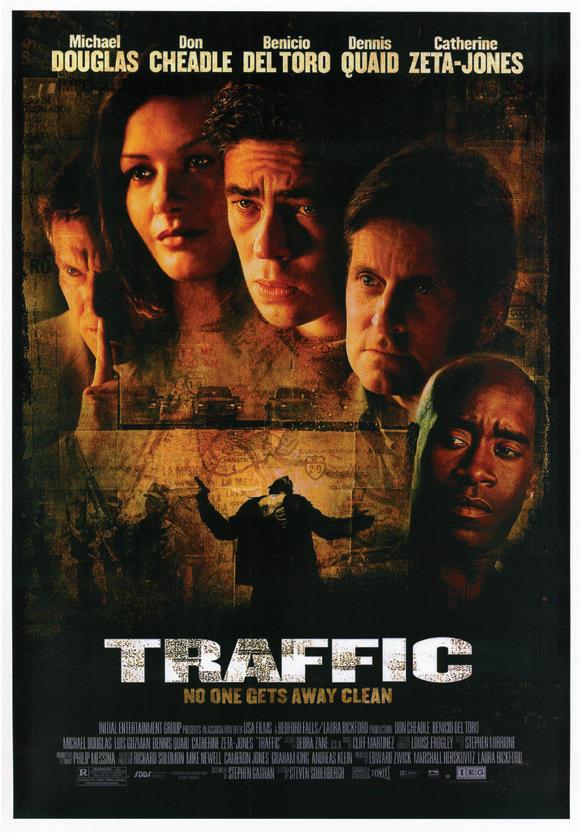
Here, the Cincinnati connec- tion is two-fold; OTR stands in for 1919 Chicago, where eight players on the White Sox conspired to gamble on their team losing the World Series. What team did they intentionally lose to, you ask? Why, the good ol’ Cincinnati Redlegs.
The most unmistakably Cincin- nati movie on the list, this Emilio Estevez social-issue drama takes place in the Cincin- nati & Hamilton County Public Library and revolves around what happens when CPD of- ficers try to force homeless library patrons out into the bitter cold.
This movie kicked off Cincinnati’s current film boom, thanks to striking performances from actor-director George Clooney and Ryan Gosling. Notably, Gosling’s character tries to make an untraceable phone call on…a pay phone at Fountain Square?
Don Cheadle directs and stars as jazz legend Miles Davis in this biopic. Much like the genre of music he’s known for, this film takes a free-form approach to showing Davis’s life, jumping around to various time periods and notable moments.
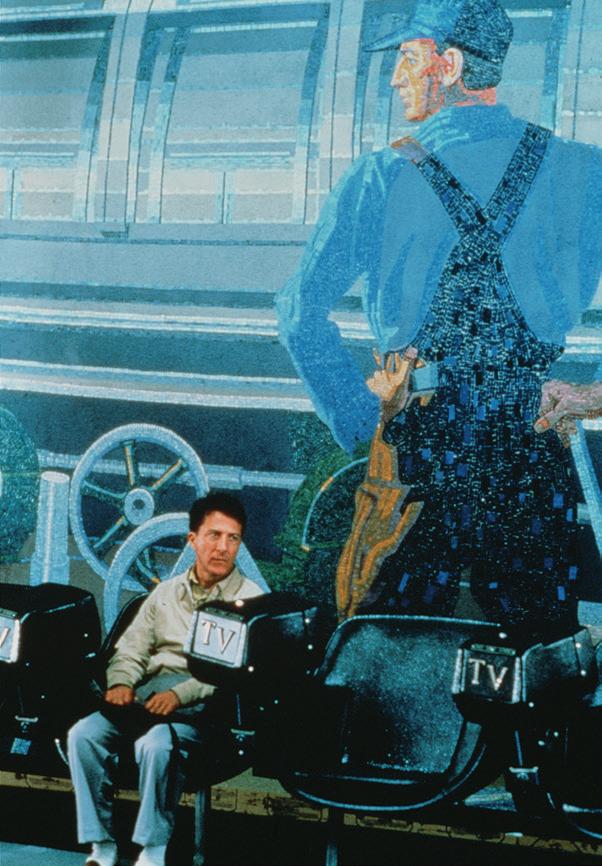
This Best Picture winner is probably the movie that most people associate with Cincinnati. Everyone and their mother knows that the toothpick scene was filmed at Pompilio’s, but can you name all the other local icons featured?
This romance from director Todd Haynes is probably the most critically beloved film on our list—among many nominations, it competed for the Palme d’Or at the Cannes Film Festival and was named one of the greatest films of the 21st century by the BBC.
Zac Efron plays Ted Bundy in this Netflix original that was shot at Northern Kentucky University and around New- port and Cincinnati. Watch for the Pepper Pod cameo!
Todd Haynes’s second Cincin- nati film was just as critically acclaimed as his based-on-a-true-storyfirst—thisthriller focuses on the lawyer who took down DuPont over its use of chemicals the company knew to be harmful.
The newest movie on this list is not for the squeamish. This bloody YA romance stars Tay- lor Russell and Timothée Cha- lamet as two cannibals in love fleeing across the country.
—SAM ROSENSTIELFar from the L.A. backlots and cordoned-off blocks of Brooklyn, Cincinnati has become home for silver screen scenes that take place all over. The Queen City has become the Big Apple on several occasions in Carol, Miles Ahead, and the upcoming Robert De Niro gangster feature Wise Guys. She’s taken the place of Big Sky, Montana, and parts of the Midwest for Robert Redford’s final film, The Old Man & the Gun. You may have been told that parts of Over-the-Rhine stood in for parts of Mexico in Traffic, but your source was misinformed—though OTR does represent what Topher Grace’s character de-
scribes as a seedier part of town. Even Northern Kentucky shone as Utah and Colorado in that Zac-Efron-as-Ted-Bundy Netflix film with a super-long title.
But why does Hollywood forgo soundstages and CGI to shoot in our backyard? Jacob Berry, an assistant location manager who lives and works on films in L.A., flies back to Cincinnati often to manage location shoots for movies, including The Old Man & the Gun, The Killing of a Sacred Deer, the soonto-be-released Shirley Chisholm biopic Shirley starring Regina King, and the upcoming ’60s biker gang flick The Bikeriders. When discussing Cincinnati as a shooting location, Berry quotes Mark Twain: When the end of the world comes, I want to be in Cincinnati because it’s always 20 years behind the times. “We get a ton of period pieces here because Cincinnati still has and holds onto older architectural styles, these older street signs even, that just happen to look perfect for old New York or old Boston or Chicago.... But it’s also the larger and broader aspects that allow us to not have to fake it so much.”
Beth Johnson, executive director of the Cincinnati Preservation Association and the city’s former urban conservator, says Over-the-Rhine is one of the largest intact historic districts in the U.S., so the classic aura is no accident. Through its nearly 60-year history, CPA assisted the city in establishing a Historic Conservation Ordinance and Historic Conservation Board, which paved the way for the OTR Historic District to preserve older architecture. Early on, CPA helped establish protection areas over Lytle Park and Dayton Street, and more recently has led efforts to revitalize OTR while still preserving those historic buildings.
And for that vintage on-screen look, Johnson credits the variety of older architecture in the city, from early Greek revival to Victorian to Mid-Century Modern. The Italianate style is most prevalent—you’ll see buildings with overhanging eaves with substantial brackets; tall, skinny windows; and castiron decorations that were once popular in Brooklyn Heights. When Johnson tours the neighborhood with visitors, they can’t help but draw comparisons to Brooklyn and even Europe. “Our architectural history is often overshadowed by larger cities and even the assumption that because we are in Ohio, we are flat farmland,” Johnson says. “I may be biased, but I’ve traveled to hundreds of historic cities across America, and the richness of our architecture combined with the topography creates an amazing backdrop to life in general, so of course it would be a beautiful backdrop for film.”
But we all know the Queen City truly shines when she’s being herself—Rain Man, Traffic, The Public, The Killing of a Sacred Deer, and Dark Waters were all set and shot in Cincinnati, and there’s nothing like seeing your little corner of the world projected in all its everyday majesty on a gigantic silver screen.

THE QUEEN CITY HAS GARNERED A REPUTATION FOR BEING A PERFECT STAND-IN FOR JUST ABOUT EVERY OTHER CITY.
Kristen Schlotman doesn’t just want Cincinnati to be a film city—she wants it to be the film city. —KANE MITTEN
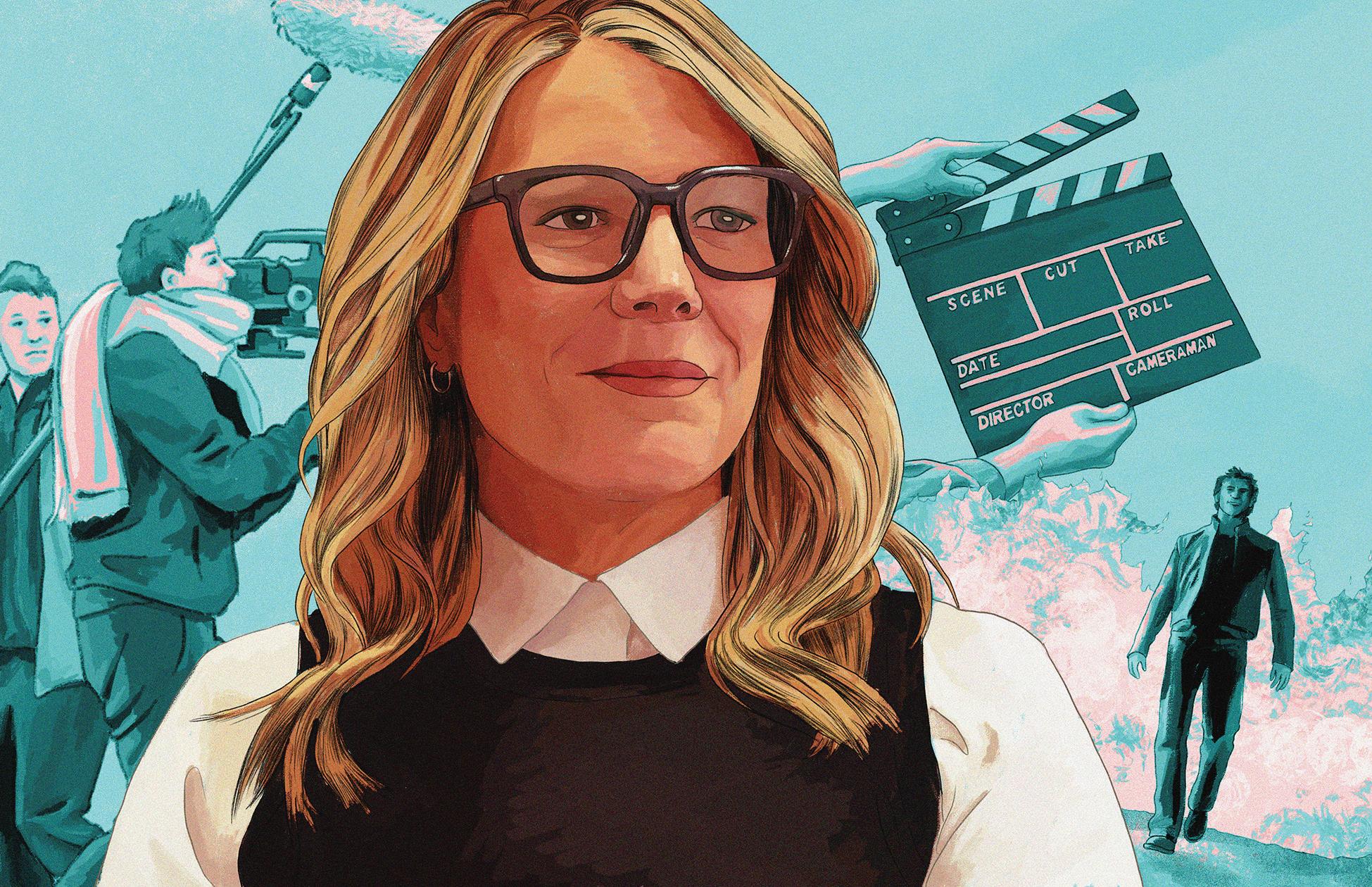
“HEY, CAN I GET THIS CALL really quick?” It’s a busy day for Kristen Schlotman, executive director of Film Cincinnati and point of contact for anyone who needs anything for all four major motion pictures currently filming in the Queen City. Of course she can interrupt the interview. Film Cincinnati has a hand in every aspect of every movie that comes out of the city, all in pursuit of its ultimate goal: to make Ohio the leading state for film production. “We are taking on the likes of Georgia, and everywhere else. Why can’t we be number one?”
It was always movies for
Schlotman. In her early years, she auditioned for Johnny Cash’s 1981 made-for-TV film The Pride of Jesse Hallam, which was shot almost entirely in Cincinnati. But it wasn’t the actors she was interested in. It was the crew. “I was absolutely obsessed with everyone working on the project,” Schlotman says. “And I said, ‘I am going to work on a set. One way or another, I am going to do this.’ I never felt more passionate about anything.”
What really kicked off Cincinnati’s movie boom was the Ohio Motion Picture Tax Credit, introduced in 2009 after lobbying from Schlotman
and others, which refunds 30 percent of wages for films made in the Buckeye State. (See “Giving Credit Where It’ s Due” on page 39.) The first local film to take advantage was the 2011 political thriller The Ides of March, which originally planned to shoot in Detroit. A decade later, three films shot in or near Cincinnati are competing for the top prize at the 2022 Venice International Film Festival—often an indicator of future Oscar winners—and Film Cincinnati is turning down projects because there aren't enough tax dollars to go around.
One of the more interesting aspects of Cincinnati’s burgeoning film scene isn’t the level of talent it has attracted— though, with Clooney, De Niro, and more coming to town, the star power certainly isn’t going unnoticed—it’s the quality of local talent that filmmakers are discovering. “They’re like, ‘Wow, there are people here that really know the business.’ It might not be their first thought that Cincinnati can make a movie, but when you get them here on that [scouting trip], and you introduce
them to people and locations… they see the depth of possibilities here,” Schlotman says. And they like what they see. “Many filmmakers who shoot in Cincinnati are repeat customers.”
Movies filming, wrapping, or prepping in Cincinnati at press time are: The Bikeriders, a motorcycle-gang drama starring Tom Hardy and Austin Butler; Wise Guys, a gangster drama starring Robert De Niro; Dandelion , a romance about two musicians starring Cincinnati native KiKi Layne; and Bang Bang, a boxing flick starring Tim Blake Nelson. There’s plenty more in the works.
As far as immediate goals, Schlotman has a few. First off, she wants to bring more bigger budget films to the area. She wants to bring “tremendous economic impact” to the city. She wants to anchor a television series here—maybe even “have eight seasons of it”—so that people have stable jobs. But most of all, she wants to help people in Cincinnati achieve their dreams without having to leave. “One of the biggest rewards I have is when I see kids studying film in college, and they reach out and want to stay here and work in this community,” Schlotman says. “Knowing that you’re part of changing their careers and their lives…it’s been really, really exciting.”
With some of the past decade’s biggest and most critically acclaimed films coming out of the Queen City, it’s getting harder and harder to say that we’re a well-kept secret. “People want to come to Ohio. And people are creating incredible content out of Ohio!” Schlotman says. “It hasn’t always been this way. It’s exciting. But I know we can do more. And we will.”
For the past decade, Winterfilm has brought together filmmakers of all ages and experience levels under a simple premise: Gather a crew and actors, and, using the provided theme and including the assigned prop (which must be integral to the film’s story—no MacGuffins here), make a 10-minute film during the month of February.
Founder Kent Meloy launched Winterfilm in 2013, when he was president of the board of the Southern Ohio Filmmakers Association. After five years of participating in the 48-Hour Film Project, where teams go head-to-head to create a movie in two days from assigned genres, lines of dialogue, and a prop, Meloy
says he found himself wanting more.
“I wanted it to be more about the story and the craft of filmmaking than it was about how well I could incorporate these [elements] in a weekend,” Meloy says. “I also wanted a little more time. That’s where Winterfilm came in. I was like, ‘OK, what if I gave teams a month and a really broad theme and prop?’ ”
For example, last year’s theme was balance and the prop was jewelry. Other past themes and props include winter and a current newspaper; deception and a mirror; and the number seven and an antique photograph. We can’t tell you what 2023’s theme or prop are—the festival’s
governing concept is that no planning or writing happens before the launch date on February 1. (Meloy picked February for Winterfilm to give the local—and regional—filmmaking community something to sink their teeth into during the slower winter months, though he notes that February isn’t necessarily the downtime it once was.)
After the films are turned in, judges review them ahead of an awards ceremony and showcase, which will be held on Saturday, April 22 at the Woodward Theater. Registration caps out at 30 teams; screenings will be in blocks of 10.
Stephonika Kaye, who began assisting Meloy in or-
ganizing Winterfilm around 2017, participated in one of the early events. At the time, she was new to the Queen City and didn’t know many people. That’s when she saw a post calling for team members on the Southern Ohio Filmmakers Association Facebook page.
“I’m still very close with those guys today,” Kaye says. “We’ve done paid work together now. Other projects came from it. Participating in one of the earliest Winterfilms laid the foundation for some of the people I know today and my own community.”
To celebrate Winterfilm’s 10th anniversary, Meloy and Kaye will join the fun this year. While they won’t be eligible for awards, the other contestants will choose a separate prop and theme for them to make a movie with so they won’t know anything in advance. Meloy says he has two goals: He wants to include a fight scene and make at least one audience member cry.
“To me, it’s almost like you have permission to fail,” Kaye says of Winterfilm. “You’re there to have fun and make a movie. You learn from the process and then, next year, make something better. I’m genuinely excited to see what people come up with every year.”
Learn more at Winterfilm. org or facebook.com/groups/ winterfilm.

One decade later, this local DIY film fest is still going strong. —MACKENZIE MANLEY
Film Cincinnati Executive Director Kristen Schlotman is well aware that the term “show business” emphasizes both words equally. For all the historic buildings and picturesque settings filmmakers find here, their movies are businesses, too, and production locations and partners are often selected with financial considerations in mind.
The Ohio Motion Picture Tax Credit, launched in 2009, offers a refundable tax credit of 30 percent on cast and crew wages for films produced here, plus other eligible in-state spending. That’s resulted in $1.2 billion in gross economic output and 6,192 full-time equivalent jobs in the state from film projects, Schlotman says, and has helped build an industry from scratch.

“We wouldn’t be where we are today without this tax credit,” she says. “It’s the first thing filmmakers ask about.”

Unfortunately, other states are doing the same thing—and doing it better—which leads to lots of movies, especially big-budget Hollywood fare, setting up camp elsewhere. Ohio caps the total amount of tax credits at $40 million per year, which has resulted in Film Cincinnati
having to turn away potential productions. “I have a list here of [at least] 23 movies that wanted to film in Cincinnati in 2022 but decided to go elsewhere because the tax credits were used up,” says Schlotman.

Georgia is the busiest movie production state outside of California, with $4.4 billion in direct film spending in 2021 alone. It offers the same 30 percent tax credit as Ohio with some modifications, but has no cap, so Georgia can take every movie production that wants to come. As a result, permanent sound stages have been built and almost 100,000 full-time equivalent production jobs have been created in Georgia.
Schlotman and her counterparts at the Greater Cleveland Film Commission have been lobbying state officials to eliminate the tax credit cap. She’s certain that Ohio can compete with Georgia and other states for more and larger movie productions, but is concerned that Kentucky recently increased its annual tax credit limit to $75 million and Pennsylvania to $100 million. “The movies we do get would not come here without this credit,” she says. Ohio Senate Bill 341 was introduced in May 2022 to uncap the tax credit program and offer infrastructure tax credits for permanent studio facilities, but it was immediately referred to the Ways and Means Committee and never received a hearing before last year’s session ended. Schlotman is hopeful the new legislature will take up the cause this year.
“Incentivizing movie production is as bipartisan an issue as you’ll ever find,” she says. “The tax credit cap was raised from $10 million to $40 million over the years as we showed elected officials the return on their investment. Now we’re turning movies away. They obviously have plenty of other options.”

OHIO’S FILM
CREDITS HAVE HELPED BUILD AN INDUSTRY, BUT OTHER STATES ARE NOW OUTBIDDING US.
DIT (DIGITAL IMAGING TECHNICIAN)

Q: THIS IS A FAIRLY NEW ROLE FOR FILM; WHAT’S IT LIKE?

A: So I work directly with the director of photography (DP), and one of the first things we talk about is the “look” they want. Everything we shoot now is digital, so it’s in “raw” footage. It’s a very washed out, gray look. I upload all the footage, store it, and I add contrast, saturation, and make the tiny adjustments to maintain the look throughout the film.
Q: ONCE YOU GET THAT FILTER FIGURED OUT, IT’S SMOOTH SAILING, RIGHT?
A: Oh no, even between lenses and cameras there are subtle differences. I have the most color-accurate monitors on set to be the DP’s eyes while they’re operating the camera. They’ll basically use my monitors to light the set.
Q: YOU HAVE TO BE PRETTY CLOSE TO THE DP AT ALL TIMES?
A: On location shoots it can be tough. For Turtles All the Way Down, we were filming by a river, basically on the water with all my gear. You have to get creative with your workflow.
Q: NOT AS TOUGH AS DESCRIBING YOUR JOB?
A: It’s always three things: the picture, the media, and being a liaison between the production and the editing booth. But yeah, my parents still ask me what I do.
Lights, cameras, actors— some movie jobs are obvious. Others can be harder to define but just as vital to any film on the big screen.
—PATRICK MURPHYCRAFT SERVICES / Movies: WiseGuys,AKindof Murder,MilesAhead
Q: HOW’D YOU GET INVOLVED IN THIS WORK?
A: I had been working at a design firm, and a former [colleague] of mine contacted me about the role. He said, We’ll give you a budget, and you bring in snacks and drinks for people. To-go items, fresh fruits and vegetables, pastries, smoothies, coffee. At first, I thought—I have five children, I could do that!
Q: HOW HAVE YOU HANDLED THIS ROLE SINCE?
A: It helps that my children are grown, and they’re helping me now. But on longer films, you get to know what people want. Since they are working long hours away from home, anything you can do to make that time more comfortable, providing good food and a smile, goes a long way.
Q: YOU’RE BASICALLY FEEDING A SMALL VILLAGE.
A: Yup, I liken our position as the set Mom, or the set psychologist. People open their hearts when they eat—you get to know everybody on set. I’ve found the favorite item working on a set overnight is midnight grilled cheeses.
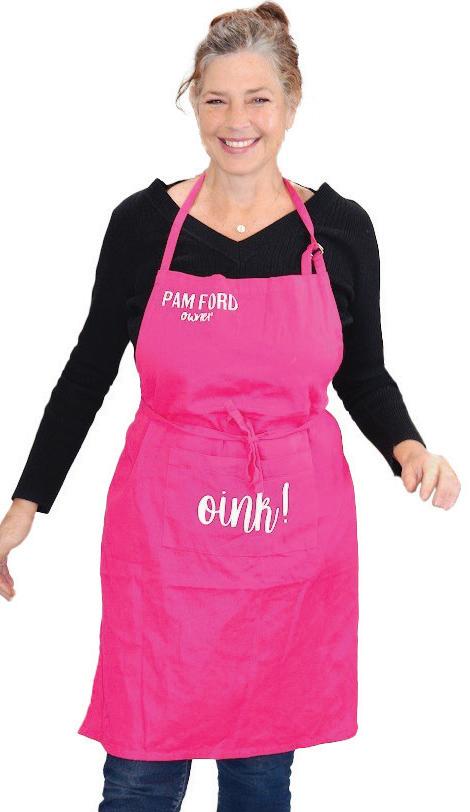
Q: WHAT’S THE ROLE OF A FIRST AC?
A: Focus pulling is the main one people think of, but they also assist setting up the shot—the DP [director of photography] or camera operator will tell them what lens to use and what angle to shoot, so we make sure it’s ready for the operator to call roll.
Q: HAS FILM TO DIGITAL MADE A DIFFERENCE FOR THIS ROLE?
A: Before, the assistant would crank the focus up close to the operator. Now it’s all remote. Sometimes I’d be
in an entirely different room with my own monitor and a dial remote pulling focus. We also have less rehearsal time, because digital creates a “shoot it and we’ll see what happens” mentality. I still remember for one scene writing on husks of corn to find my distances.
Q: CERTAINLY DOESN’T SOUND LIKE BORING WORK.
A: Focus pulling is incredibly fun, but incredibly stressful. You can fix some lighting and color correcting in post, but you can’t fix a shot that’s out of focus.
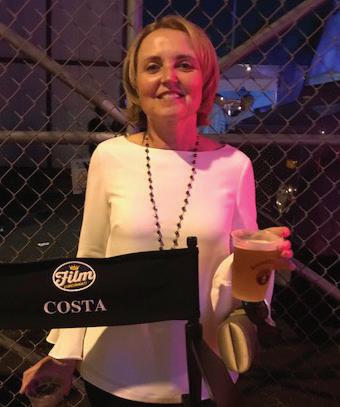
LOCATION MANAGER / Movies: IdesofMarch,ThePublic, Carol

A: It starts with scouting; we break down the scripts, see what locations they’re looking for, like a red-brick colonial rather than just a “house.” Then it gets to location management: signing contracts, dealing with lawyers on how many days we’ll be filming, all of the interior or exterior alterations. All of that needs to be negotiated. Then, of course, we need to restore everything once we’re done.
Q: THAT’S A LOT LIKE SPINNING PLATES.
A: It’s a lot we’re responsible for. Permits, dealing with police, finding a space for the extras, getting rid of trash—our department is the first on set and the last off
Q:
A: Not so easy. [Laughs.] We were there for 19 days, and the longer you’re there you have to keep the location happy. It can get stressful for the location to have us around—it’s kind of like the circus coming to town. But they were so cooperative.
Q: WHO’S THE BEST DIRECTOR YOU’VE WORKED WITH?
A: I loved working with George Clooney on Ides of March—fun to be around, cared about the crew, and gracious with all the locations, which made my job easier. After the movie was over, I remember the accountant saying she had never had so many $1 [location contracts] on any film before.
SECURITY / Movies: TheOld Man&theGun;HillbillyElegy; ExtremelyWicked,Shockingly Evil and Vile

A: I was working as a production coordinator on a Lifetime movie when our security fell through. I was like, “I have brothers, we can [do this].” After that worked out, I wanted to continue giving opportunities to my brothers, so we got licensed, bonded, and insured, and since 2016 we’ve been growing.

Q:
A: It takes a lot. For The Bikerider s there are eight locations right now, with staff changes every eight hours, so it takes a whole lot of coordination, patience, [and] endurance working on-location or mobile patrols for bigger sets.
Q:
A: There was actually a fight between one of the producers and another individual on The Old Man & the Gun. One of my brothers jumped right in the middle of it to defuse, and out of thanks the producer gave him one of the prop cars. We can’t accept gifts, of course. [Laughs.] He told us we could use it for security.
LOOKING FOR MORE THAN THE MULTIPLEX? TRY ONE OF THESE FIVE PLACES TO GET YOUR CINEASTE ON. —KANE MITTEN

The Esquire is a Cincinnati icon, established in 1911 and the biggest of the few local independent theaters left standing. You’ll find a good mix of blockbusters and indie hits at the Esquire, but the real reason to go is the selfadvertised “Best Popcorn in the City.” Yes, it really is that good. 320LudlowAve.,Clifton,(513)2818750,esquiretheatre.com
The sister theater to the Esquire, this art-house joint tends to show more international and repertory screenings than its Clifton counterpart. Same popcorn, same owners, and same vibe; you’re just more likely to find your favorite classics showing here. And who doesn’t love seeing their favorites on the big screen? 6906Wooster Pike,Mariemont,(513)272-2002, mariemonttheatre.com
This group of cult cinema lovers regularly hosts theater screenings of your favorite action and horror classics (recent showings include Mad Max, TheThing, and Fire Walk With Me) alongside
video store pop-ups and home media sale/swap events. For media collectors, there’s no better local group to be a part of. facebook.com/people/Secret-BaseCinema/100076010237678
Clifton’s favorite record store has partnered with the Esquire to create “Torn Light Records Presents,” a monthly series that shows underseen and underappreciated films—whether it’s B-movies, international gems, or just well-known but little-seen movies that deserve a second chance. Don’t miss the in-store video section, full of films you’ll never find anywhere else. 356 LudlowAve,Clifton,(513)873-6995, tornlightrecords.com
There used to be 28 theaters just in downtown Cincinnati, if you can believe it. The Garfield Theatre is now the last one standing, thanks to the efforts of Cincinnati World Cinema. As the name implies, the CWC focuses on showing unheard-of flicks from all across the globe. 719RaceSt.,downtown,cincyworld cinema.org
In the age of streaming, it can be hard to remember how invigorating the theatrical experience is. —JUSTIN WIESE, FILM PROGRAMMER & CURATOR, TORN LIGHT RECORDS
I’VE PROGRAMMED A MONTHLY FILM SEries at the Esquire Theatre since 2019 as a representative of Torn Light Records. We strive to curate iconic and interesting cult films and bring them to the Esquire cinema screen in a way that can bring attention to the intricacies and artfulness of cinema’s past, both highbrow and lowbrow. We’ve screened cult classics like Brazil, Repo Man, The Harder They Come, Polyester, City of the Living Dead, and Hard Boiled; we hope to expand the boundaries and scope of our screenings every month.
The highlight of our screenings, especially in the last year, has been the growing community that attends. Talking about actors, soundtracks, and directors in the lobby before the feature, afterwards spilling onto the sidewalk out front to discuss what was just viewed—that sense of community is the most important part of going to the movies. Gathering with people of all walks of life to experience a film together is one of the key aspects of appreciating it. It’s a tradition that has been around since the dawn of cinema. Seeing a film as it was meant to be shown, in a communal setting, on a nice big screen, will always be the best way to experience it.
The advent of home video in the early 1980s, rising ticket prices due to corporate theater chains,
and most recently, the growth of massive studio-owned streaming services—which can bring hundreds of thousands of movies into the home with a few clicks of a remote—have all contributed to a decline in movie theater attendance. What the best feature films can co nvey in a big, loud theater is nowhere near the same experience as watching that film on a cell phone or a television. It’s not
just the technical details that get lost, or even the texture or emotion of filmmaking. The biggest thing that’s missing when you’re watching movies this way is the most important: the sense of community.
Movie theaters, by design, are community havens. These spaces provide a way to emotionally connect with others through art, simultaneously sharing an experience that is unlike any other. You know

yourself that comedies always seem funnier when there’s an enthusiastic crowd, hooting and hollering for every pratfall or gag. You’ve felt the tension ratchet up during a horror film or thriller, just waiting for that big jump scare or reveal. Sweeping fantasy epics, sports dramas, and explosive action films always feel best suited for the biggest screen and the loudest sound possible.
From the silent film houses
of the 1920s to the blockbuster megaplexes of the 2000s, movie theaters continue to evolve with their audience. They have survived wars, censorship, recessions, and corporate interference. Supporting your local independently owned theaters, drive-ins, arthouses, and historic movie palaces allows the continued exhibition of films the way they were made to be seen. Movies always seem to work better in a theater.







On a warm Saturday night in June, the museum temporarily opened a 19,000-square-foot space known as the annex. It’s usually off-limits, closed off from the well-visited “Main Street” exhibition space by a large metal garage door. To accommodate the party’s circus-like theme, the annex became a glittering showplace of usually-in-storage vintage commercial signs, some welded into place along metal trusses and support beams in the 28-foot-high wooden ceiling. Signs emblazoned with multicolored neon or bulb lights conjured the past glory of such places as East End Café (“Stag Only”), Wilson Motors, Damm Theatre (“Talkies”), Pioneer

Bar, Norman’s (“Everything In”) Glass, and Robby’s Liquor Nite Club. Prominent on a wall at the end of this mammoth room was a single illuminated word in elegantly flowing script: Pops! It used to serve as a backdrop for Cincinnati Pops concerts.
Performers used a temporary stage to show off their physiques, acrobatic skills, and talents. Many in the audience of about 550 were colorfully outfitted to celebrate the museum’s 10th anniversary of being in and adaptively reusing its Camp Washington home on Monmouth Avenue, a once-industrial site from 1907. Under the leadership of founder Tod Swormstedt, it’s developed a wide following by displaying
and telling the history of commercial signage of all types, especially the mesmerizing, hand-made, bent-glass neon signs so iconic today.
Already in the works, but not yet announced at the June party, were plans for
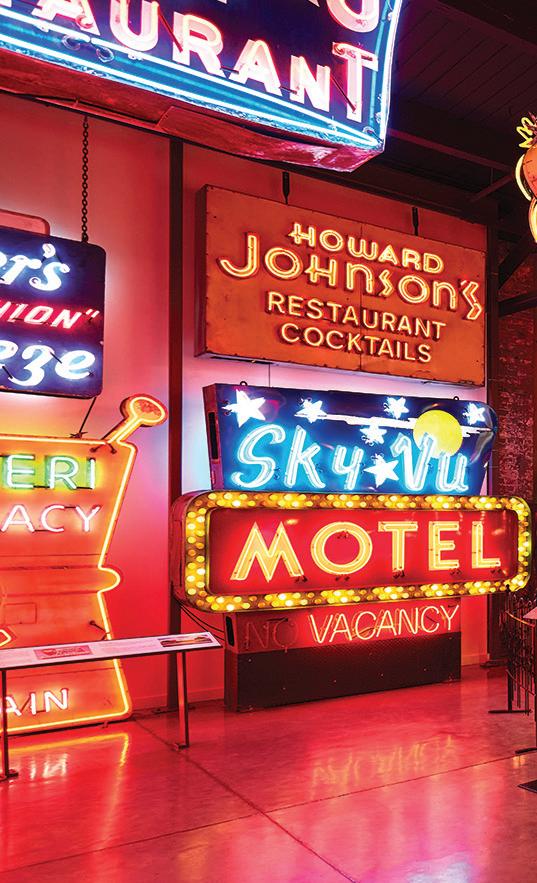
It’s likely that everyone who was there, as well as plenty who weren’t but heard about it later, thinks Signmaker’s Circus: A Decade of Camp at American Sign Museum was Cincinnati’s best party of 2022.
a public campaign to raise $5.5 million to expand the museum to 40,000 square feet of visitor-accessible space by renovating the annex. The circus was a test run.
Swormstedt first established the American Sign Museum in 1999, and five years later he opened a leased exhibition space at Essex Studios in Walnut Hills. That layout proved insuffi cient, so the 2012 move to Camp Washington expanded into 20,000 square feet of space. The public responded to the new site as well as its outdoor boneyard (a resting place for old signs) and hand-painted murals on exterior walls.
Attendance climbed 106 percent and revenue increased 91 percent between 2013 and 2019. In December 2022, the museum was on track to reach a record 50,000 visitors; about 45 percent were from outside the Cincinnati region. A 501(c)3 nonprofit with a staff of nine and a board of trustees, the organization has plans to hire a full-
time curator of collections and programming in 2023. It also keeps getting lots of national attention—in 2022, USA Today ranked it the 10th best pop culture museum in the U.S.
Beyond all of the early neon signs from such icons as McDonald’s and Howard Johnson’s Ice Cream (“28 flavors!”), there is vintage material like sign-painter kits, lettering guides, gold-leaf hand-painted signs, a timeline of dimensional lettering, and painted showcards promoting old John Wayne movies as well as nightclub appearances by once-adored singers and comedians Tiny Tim, Totie Fields, and Charo. (Actually, Charo is still popular.) Some of it is as visually compelling as any neon sign.
On display in a Main Street window, for instance, is a 3D architectural diorama of an urban street scene by the influential designer and outdoor advertising enthusiast Douglas Leigh. It features hand-painted
Tod Swormstedt and Cynthia Kearns (previous spread) are leading efforts to expand the American Sign Museum’s capacity to display its trademark neon signs (left) as well as other historical signage (below).
human figures and storefronts as well as scale model Railway Express Agency package delivery trucks on the miniature street. Creating such a scene was how Leigh would pitch a client—in this case, he was trying to get Railway Express to sell advertising space on the sides of its trucks.
“This museum is different things to different people,” says Swormstedt. “It’s pop culture. It’s a memory lane for people who see a sign that reminds them of a first kiss in a drive-in. It’s historic preservation. And it’s also about design and car culture.”
ANNOUNCEMENT OF THE Sign Museum’s expansion came several months after the circus, on an October evening before a group of about 70 supporters. Cynthia Kearns, hired in 2019 to manage the expansion campaign and named the museum’s third director in 2021, revealed the news in CONTINUED ON PAGE 61
“This museum is different things to different people,” says Tod Swormstedt. “It’s pop culture. It’s a memory lane for people who see a sign that reminds them of a first kiss in a drive-in.”
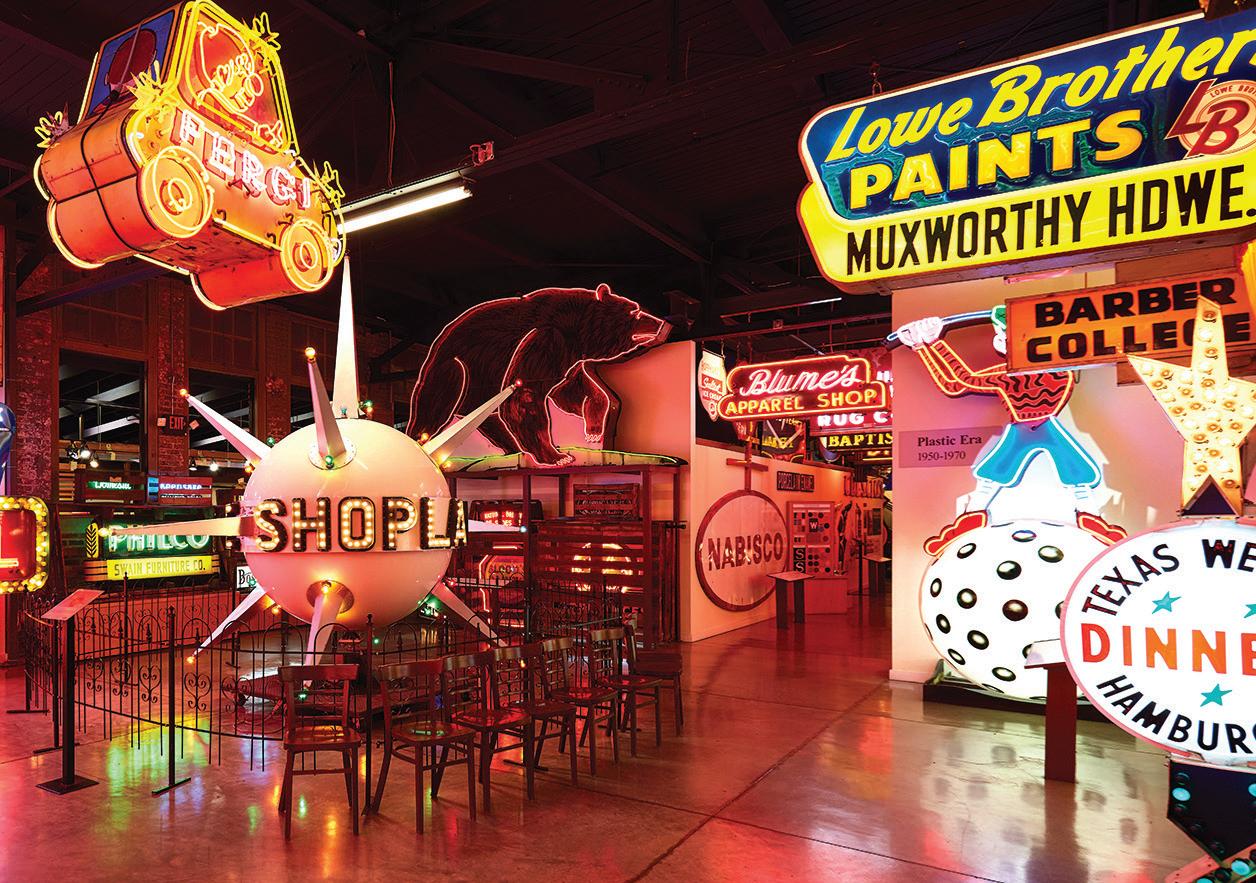
The Cincinnati native’s Oros cold-weather technology is being tested by the U.S. Department of Defense, the Blue Origin space program, and outdoor apparel consumers. And he’s just warming up.









 BY CARRIE BLACKMORE SMITH ILLUSTRATION BY PEDRO CORREA
BY CARRIE BLACKMORE SMITH ILLUSTRATION BY PEDRO CORREA


UNTIL THE FOURTH grade, Michael Markesbery lived down the street from his grandparents in Mt. Airy. Every day after school, he and his sisters went to a latchkey after-school program and then to their grandparents’ house for dinner.
“My grandfather would ask me the same set of questions at every dinner, and after the questions was the same story,” says Markesbery, now 30 and cofounder and chief executive officer of Oros, a high-tech cold-weather apparel company headquartered in Portland, Oregon.
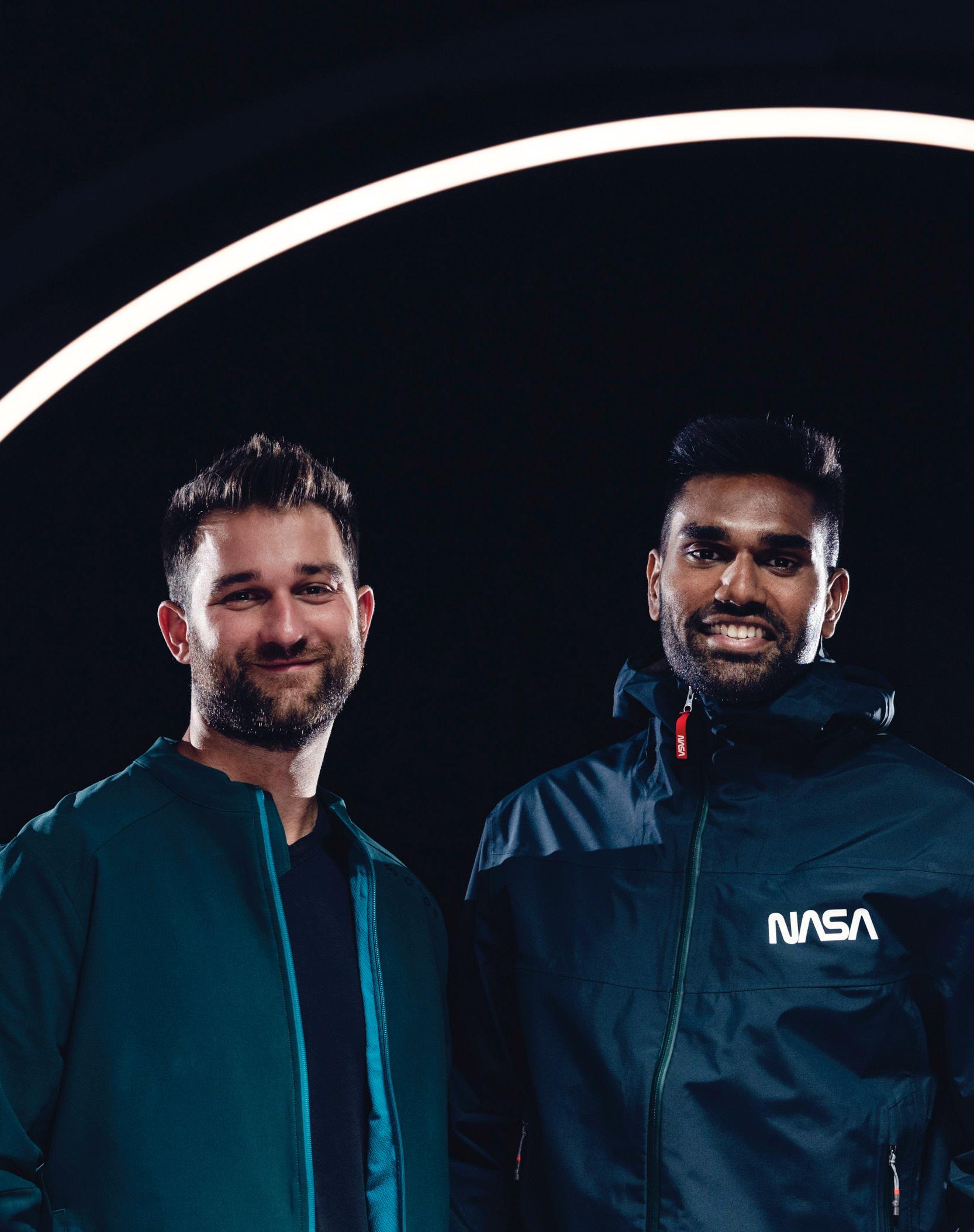


Khamis Alexander Saba would tell his grandchildren about growing up in Palestine and emigrating from Beirut, Lebanon, with little more than a medical degree, then becoming a successful general surgeon at Good Samaritan Hospital in Cincinnati.

After dinner, the kids went home. Their father, Glenn Markesbery, was building a law firm and sometimes wasn’t home until 10 p.m. Despite the late hour, father and son had an unspoken pact that if Michael had done a household chore he could tiptoe from his room and share some of Dad’s dinner.

“One of the things that was ingrained in me, hearing my grandfather’s immigrant story and watching my dad build what he built, was grit,” says Markesbery on a video call from an Airbnb in Washington, D.C., where he’s spending a couple of days meeting with Oros stakeholders. Now in business for seven years, the company’s partners come from the commercial and government sectors—even more so since Oros landed a $10 million appropriation from Congress last year to produce next-generation tactical shelters and extreme cold weather apparel for the U.S. military.
Grit is clearly something the self-proclaimed science nerd picked up early in life. He planned to be a doctor, like this grandfather, but veered off course while studying zoology at Miami University and became an entrepreneur instead. By the time Markesbery graduated, he and another student, Rithvik Venna, had launched their startup company (later renamed Oros) with a successful $319,000 crowdsourced Kickstarter campaign. Two years later, Forbes named the cofounders to its “30 under 30” list.

“BEING AN ENTREPRENEUR IS LEARNING HOW TO BECOME COMFORTABLE WITH BEING UNCOMFORTABLE.”
Today, the duo’s patented Solarcore technology is inside its own cold-weather Oros apparel line and is purchased by third parties to build into cold-weather products such as winter shoes made by Cabella’s, John Deere, L.L. Bean, and, starting in 2024, Merrill. “The vision I have always had is to transform thermal materials,” says Markesbery.
Oros has successfully demonstrated its technology in outdoor apparel, says Tim Holcomb, director of Miami University’s John W. Altman Institute for Entrepreneurship, who has been a mentor and advisor to Markesbery and Venna. He can’t wait to see what they do next.

“Being an entrepreneur is learning how to become comfortable with being uncomfortable,” Holcomb says. “Michael and Rith have done well knowing it’s going to take five to seven years to develop the technology and still having the patience to chop wood and not get distracted when bad things happen.”
YOU MIGHT SAY THIS BUSINESS concept started when Markesbery summitted Säntis, an 8,200-foot mountain in the Swiss Alps, the summer before his junior year at Miami. Or you might say it began some months later, the day two zoology students, both intent on becoming doctors, started talking about aerogel.
It was fall semester of 2013, and Markesbery and Venna were cramming for an or-
ganic chemistry exam. “We were walking across campus to take the test, and he starts pitching me this idea and my mind starts spinning,” says Venna. “I was supposed to be remembering all of these carbon chains. That’s probably why he beat me on that exam.”
Markesbery had been reading about a class of synthetic ultralight porous materials called aerogels in his spare time. The material was created in the 1930s and developed over the years by scientists at NASA and elsewhere to insulate skyscrapers, pipelines, and even space shuttles. As the name suggests, aerogels are more than 90 percent air, one of the lightest known solids on Earth, he explained to Venna. Their low thermal conductivity gives them incredible abilities to block cold and heat.
On the mountain, Markesbery had cursed his bulky jacket, thinking that there must be a better way. Was it aerogel? “We became obsessed,” says Venna.
They ordered aerogel from suppliers in Europe, Asia, and the U.S. with some scholarship money that Markesbery won the year before,





began experimenting with it in a Miami science lab, and signed up for a 48-hour startup weekend held by the university’s Institute for Entrepreneurship. Markesbery ultimately chose to build the company, first called Lukla, as his senior capstone project, and he and Venna began seeking out advisors.
“That’s just how Michael approached everything in life, with the scientific method,” says Maria Markesbery, his mother, who is also a lawyer.“Give him a problem, and he is going to find that solution. The decision to put it on Kickstarter—to validate consumer interest—was enough for me not to worry. It was something like 48 hours later, and they already got to their $100,000 goal. I’m like, OK, well, that decision’s been validated.”
In all, 904 backers invested $319,320 in the Kickstarter campaign. Markesbery and Venna continue to be successful in fund-raising, pulling in $14.5 million in the latest round of Series A funding. “People are interested because we’re solving a huge problem,” says Markesbery, talking about applications beyond apparel.
“There’s $35


Seven Hills is the top ranked Cincinnati private school, for students age 2 through grade 12. To learn more or schedule a personalized tour, contact The Seven Hills School’s Admission Team at (513) 728-2400 or visit www.7hills.org!
Seven Hills is committed to providing access to as many students as possible. As part of the new Affordability Initiative, the school offers two important options: the and . Approximately 35 percent of the Seven Hills student body participates in the Flexible Tuition program.

The Seven Hills School ranked , and Seven Hills teachers, at every grade level, provide unique learning opportunities that lead to academic achievement and personal well-being for students.
Trained in some of the nation’s best universities and recruited from all over the country, Seven Hills teachers are experts at their academic subjects and the grade levels they teach. In an environment that encourages students to take risks and stretch beyond their sphere of mastered skills, Seven Hills students gain more from their time at Seven Hills—supported along the way by their innovative teachers.
Opened in the spring of 2022, Seven Hills’ new Middle School facility was thoughtfully designed to meet the unique academic, social, and emotional needs of students at this age. Guided by the educational philosophy that middle schoolers thrive best in environments designed just for them, our sixth, seventh, and eighth graders learn and grow in dedicated spaces, known as “communities within a community,” in the new and expanded Seven Hills Middle School.
Open House: February 5, 2023, 2–4 pm
Bethany School is a 124-year-old independent, K–8 Episcopal school located in Glendale, Ohio. Bethany has a long history of nurturing the whole student with outstanding results. Known for its campus like setting, the school encourages spiritual growth, academic excellence, and character development. Two new academic buildings welcome students through their doors every morning. The Bethel
Platinum energy efficient school build-

ing and has an equally amazing natural playscape. The new playscape will foster activity and risk-taking in a safe environment. The new buildings are both beautiful and inspiring for the staff and students. Along with academic excellence, Bethany School offers extensive extracurricular activities and summer programming. We are centrally located near I-75 and I-275.
Join us for our Open House on February 5 from 2 to 4 p.m. For more info visit www.bethanyschool.org.

Bishop Fenwick High School is a Catholic, co-educational high school in the heart of the Archdiocese of Cincinnati on 66 acres on State Route 122, minutes from I-75 and State Route 741. The Fenwick experience— challenging classes, diverse activities, competitive sports, and creative arts— prepares students for future successes. Fenwick offers three levels of college prep
courses, including AP and CCP courses, Engineering and IT programs, and a wide variety of electives. Fenwick also providesthing they enjoy, including athletics, arts, service, and STEM. The Fenwick experience inspires students to learn, to lead, and to love.
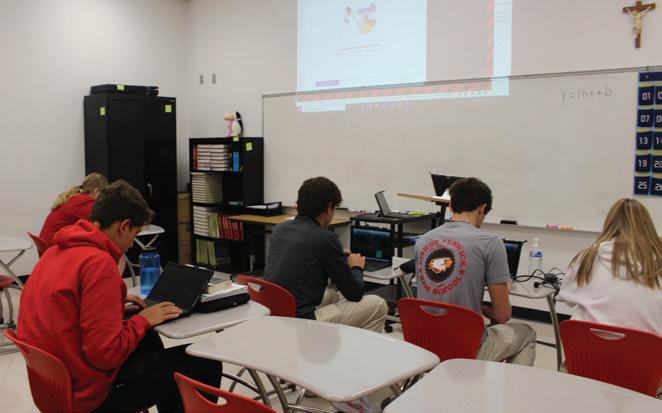

Open House: Sunday, January 29, 2023, 2–4 pm
Tours: By Appointment, contact RSVP@CMHSchool.com
Nestled on more than seven acres just outside historic Loveland, Children’s Meeting House seeks to foster the development of the whole child by implementing the philosophy, practices, and curriculum of Dr. Maria Montessori. Children are empowered to learn and develop at a pace inspired by their own instinctive love of discovery. From preschool through eighth grade, students
are guided, challenged, and prepared for their futures using authentic Montessori lessons and materials. Enriched by abundant natural woodlands and working gardens, CMH fosters a high level of academic success within an outdoor setting few schools in Cincinnati can match. Come see where learning happens, naturally.
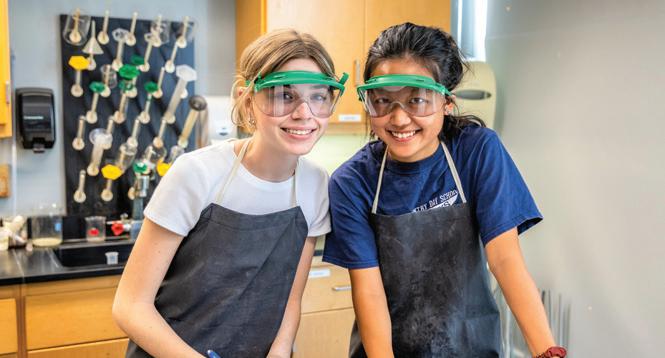


We ensure families that their children will be known, nurtured, and inspired. We provide students an exemplary, character-driven, and innovative academic experience that will guide them to be the future leaders of the next generation.
We are one community united to help grow students, ages 18 months to 18 years. We connect students both academ-
ically and personally, whether in the classroom or outside on our 62-acre campus.
the next phase of their lives with purpose,
Be a scholar. Be an athlete. Be an artist. Be an innovator. Be a philanthropist. Be a leader. Be your best self. Country Day is The Place To Be.

Open House: January 28, 2023, 10 am–1 pm (all campuses); April 13, 2023, 8:30–10:30 am (all campuses); in-person and virtual tours available. Learn more at chca-oh.org/visitus.
Step into CHCA and you will discover an extraordinary Christ-centered education unlike any within the city, where students have countless opportunities to Choose More—to find their place, pursue their gifts, strengthen their faith, and make a meaningful impact on our world. Whether you are a preschooler, an Upper School


student, or anywhere in between, you will experience high levels of engagement intellectually, spiritually, and relationally. It’s where innovative programming, theological integration, hands-on learning, and countless extracurriculars all come together to result in unique and exciting learning experiences.
Open House: February 4, 2023, 10 am–1 pm. Personal tours available by appointment; e-mail enrollment@cincinnati waldorfschool.org

The Cincinnati Waldorf School provides active hands-on academics infused with nature, community building, and the arts. CWS students learn compassion, resilience, creativity, balance, problem solving, and independent thinking—exactly what our world needs most right now. Waldorf teachers are experts in outdoor education, and our students spend a lot of time outside. This year we are continuing to spend as much time outdoors as possible to pro-
vide a safe and joyful learning environment for our students. Waldorf High School students work closely with teachers who are experts in the subjects they teach. The high school curriculum is extremely diverse and gives students the opportunity to engage in a wide assortment of classes, allowing them to dive deeply into academic subjects that are integrated with art, music, drama, community building, and more!
Great Oaks is a public career-technical school district serving 36 school districts in southwest Ohio.
Each year, thousands of area high school students prepare for a career at a Great Oaks Career Campus—Diamond Oaks in Dent, Laurel Oaks in Wilmington, Live Oaks in Milford, or Scarlet Oaks in Sharonville.


bersecurity to construction trades, culinary arts, agriculture, cosmetology, and more. Great Oaks offers over 30 different programs on campus as well as satellite
school districts.
Career training, ESOL, HSE, and personal enrichment programs are also available for adults.
care to high-tech manufacturing to cy-
Partnerships with local business, education, and community agencies help shape the programs offered.
Open House (K-8): Sunday, January 29, 2023, 1–3 pm. Visit gaschool.org to RSVP for Open House or call to schedule a personal tour.

Guardian Angels School provides a Catholic education to students in preschool through 8th grade. Our focus is on individualized education, preparing each student to be a faithful disciple of Christ through service and leadership.

Character development is a top priority. Students work hard each day at earning their “H.A.L.O.,” by being Honest, Accountable, and a Leader to Others. Skills
related to each of these character traits are directly taught by staff and modeled by all. The result is a strong community of
The combined approach of guiding students spiritually, academically, and socially leads students to graduate from Guardian Angels fully prepared to be successful in high school and beyond.
Open House: February 26, 2023, 2–4 pm
Centrally located on the banks of the Ohio River, Montessori Center Room (MCR) is the only local Montessori program specializing in pre-primary education.




Our two classrooms, fully equipped with traditional Montessori materials, are led by experienced and Montessori credentialed teachers. Teachers prepare a loving environment that is enticing to the young child’s mind; fostering a lifetime love of learning,
the opportunity to develop independence and the skills necessary to support their intellectual, social, emotional, and physical growth.
Children at MCR spend their days choosing activities in the classroom, in individual and small group lessons, and playing outside. We encourage you to schedule a tour of our facility and visit one of our classroom observation booths.
Virtual Open House: January 22, 2023 / Zoom Meeting begins at 2 pm
We encourage you to visit our website and schedule a tour with our admission director.
Our experienced Montessori-credentialed teachers prepare students to succeed in the real world by allowing children to discover their innate love of learning and by helping them develop time-management and relationship-building skills. Students are adept at working in active spaces in both positions of leadership and as team members. Teachers interweave Montessori principles and philosophy to create an atmosphere of respect for one another. Students’ social and emotional health is fostered daily -
sions, and skill-building exercises in grace and courtesy. Our hands-on Montessori kitchen provides homemade, healthy lunches with plenty of vegetarian options. The New School’s wooded spaces allow for age-appropriate active play in shaded, natural surrou ndings. In addition to more traditional climbing equipment, children
logs in search of interesting insects, climbing on low tree branches, and building huts. The older children also enjoy tetherball, outdoor ping pong, and the gaga pit.
Tours available by request. Please contact Sarah Shmoel at admissions@rockwernacademy.org or (513) 984-3770 ext. 3015 to set up an appointment.
Rockwern Academy’s mission is to expand minds, celebrate Judaism, nurture community, and commit to building a better world.
Located in the Kenwood area, Rockwern serves students from 12 months through sixth grade. Small class sizes allow our teachers to know their students at a deep level, tailoring learning to meet
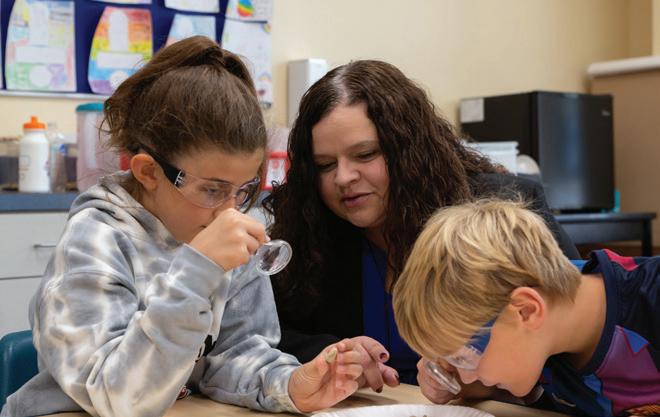
individual needs and interests. An integrated curriculum supports personal and intellectual growth through discovery and hands-on experiences.

Early care and after care are available for all students. For our early childhood program, there are full- and part-time options plus a summer camp. Tuition assistance is available to families in need.

Open House: Annual Open House in October, tours given once a month on Tuesdays, shadow program available. Auditions to enroll take place in January and April.
SCPA is a K–12 pre-professional art and academic college preparatory school. Artistically, we prepare students for continued university and conservatory studies, apprenticeships, and/or professional experience. Academically, we prepare students for continued college and university studies in the humanities, liberal arts, and sciences. In addition to serving a
student population with traditional needs, SCPA serves students with Individualized Education Plans (IEP) and students who
talented. Through meticulous attention to both artistic and academic development, we provide all of our students with unique educational opportunities in a creative and challenging environment.





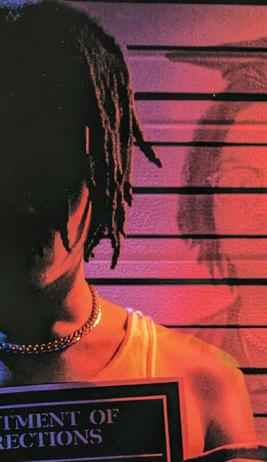


Open House: Call (513) 871-6080 ext. 211 for a private meeting or an open house. Admissions tours are available in person and online. Schedule today with Admissions Director Jill Wieging.
Students struggle in school for many reasons. A learning disability is one of them. For more than 50 years Springer has empowered students with learning disabilities to lead successful lives. This is achieved through a research-based curriculum, individualized and explicit instruction, and strategies and tools that help students









manage their learning difference. Students receive social/emotional support that encourages the whole child to flourish. Springer is the regional expert on learning differences including dyslexia, ADHD, and executive function challenges.
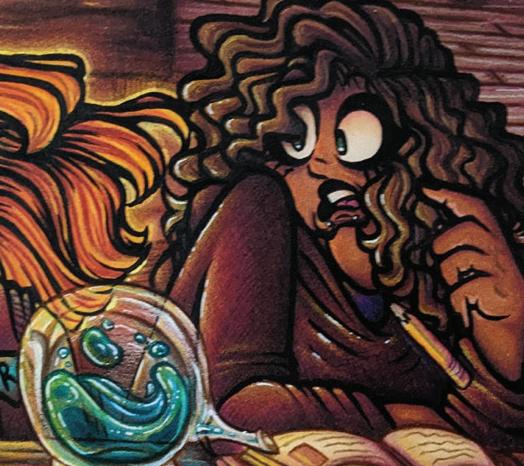

44
the Camp Washington event space. She picked a dramatic backdrop for photos, an easy thing to do since they’re plentiful at the museum—a mural-length Chew Mail Pouch Tobacco sign and the vertical wooden barn slats on which the advertising message had originally been painted. Swormstedt had rescued them from a deteriorating barn in Lanesville, Indiana, in 2006.
By the time of the October announcement, some 76 percent of the $5.5 million goal had already been quietly raised. The state of Ohio earmarked $750,000 from its capital budget, the Swormstedt family
in March 2020, which created hardships because of the necessary cancellation of private rentals and related staff cutbacks. But it also provided time for leadership to define what else it wanted the museum to be, looking beyond event rentals and the stories of old signs and related historic paraphernalia. “We also want to talk about the people behind the signs and explore the diff erence between the industry and the individuals who do a craft,” says Kearns. “When is this a trade, and when is it an art form? That’s what on the surface now during a visit.”
There will also be space to allow the museum to experiment, which could open up possibilities for radical change. “We do history very well and explain the history in a way people can understand, because it has a linearity to it and an immersive experience that many people really appreciate,” says Randy Smith, a museum trustee who leads a new programming committee. “What we don’t do as well is talk about today and
expansion include:



In July 2022, Swormstedt worked with Clifton Heights groups to save a lookouttower-shaped yellow metal sign spelling out, in shaky green paint with a white outline, “The Mad Frog.” The building was being demolished. “We want to get off the top layer of paint because underneath it could say ‘Corry’s,’ which back in the day had H. Bomb Ferguson [the popular wig-wearing Cincinnati blues and soul singer who died in 2006] and others playing music there,” says Swormstedt. “It would be really cool to have the resurrected Corry’s sign. That’s one a lot of people can relate to.”
Swormstedt went to Chicago recently after a sign-painter there discovered “ghost” hand-painted signs on the wood of a century-old building. The structure was being prepared for demolition and a layer of siding had been removed, revealing the long-hidden signs. Swormstedt carefully removed one sign advertising Ward Bread, which was owned by the family that later made Wonder Bread and Hostess Twinkies.
committed $1.6 million (and got naming rights for the museum’s expanded portion), and major “leadership” gifts came from the Haile Foundation, the Foundation for the Advancement of the Sign Industry, and the sign company Gemini.
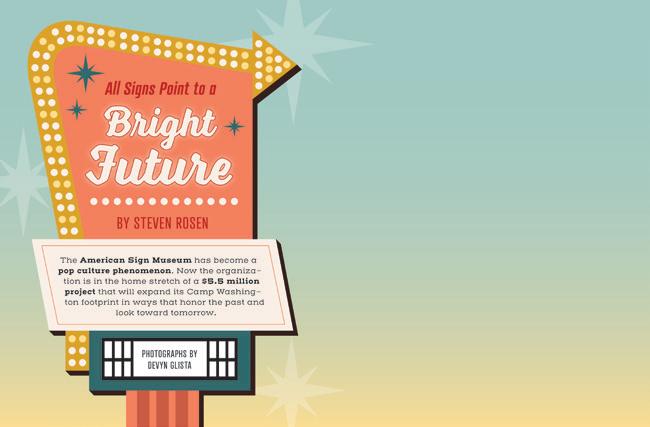
Additions to the museum’s footprint will include a library for the study of signs, a workspace for artists-in-residence and other makers, a locally themed outdoor boneyard bordering the building’s long Monmouth Avenue frontage, space to introduce temporary exhibitions (Swormstedt would like the first show to feature West Coast neon signs), and a doubling of the permanent Main Street exhibition space by extending it into the annex.
The expansion’s first phase is almost done; the second may well be finished by year-end. Perhaps the whole thing would have been completed by now except for the unplanned impact of the pandemic
into the future. So part of what we want to do is create a space where people can experiment. We’ve carved out some room that maybe will be available to an artistin-residence who’s trying a new technique in digital signage, or it could be used for something with interactive signage. Things that are participatory and really push the limits of technology will be interesting to visitors and younger guests.”
The Sign Museum already rents space to NeonWorks, a commercial neon shop that visitors can see into from a distance. “We want to look slightly into the future instead of always being focused on the past,” Smith says.

Everyone agrees one goal is to be able to display more objects and publications from the permanent collection, since there are currently some 3,300 in storage, says Kearns. Examples of recent major acquisitions that may be able to be displayed after the
The museum is currently storing a neon sign with so many devoted fans in New York City that some even made a short film about it. It’s from the Palomba Academy of Music in the Bronx and has two segments: The word “Palomba” is tilted upward like a ramp, while the rest of the name is horizontal. The museum acquired it along with its bright red porcelain enamel backing in 2020, after the owner shut down the business.
The museum received a large triangular marquee in 2021 from the Ioka Theater in downtown Exeter, New Hampshire, along with the individual oversized letters spelling “IOKA” that sat atop it. Because messages can be placed on the marquee using changeable letters, Swormstedt says the plan is to use it to promote events in the renovated annex.
UP TO THIS POINT, AND PROBABLY AS long as he wants it that way, Swormstedt, 69, will be the Sign Museum’s driving force and public face—a distinctive one, given that his hair is kept in a ponytail and his beard is thick. He’s aware that others might think of him as a “crazy long-haired guy.”
“It’s a perception that I’m a child of the ’60s, and I have a little bit of attraction to

“WE WANT TO TALK ABOUT THE PEOPLE BEHIND THE SIGNS AND EXPLORE WHEN THIS IS A TRADE AND WHEN IT’S AN ART FORM,” SAYS MUSEUM DIRECTOR CYNTHIA KEARNS.
that,” he says during an interview in a quiet space at the museum where he likes to go to think. Swormstedt can be funny, but also candid, when talking about the challenges of his past. He refers to the museum as his “midlife crisis;” he’s been married twice and currently has a girlfriend. He’s also inspirational and even evangelical when talking about the value of signs and signmaker culture.
He was born in 1953 under a very good sign: His family had owned the Cincinnatibased Signs of the Times business magazine since 1914. It has chronicled developments in commercial outdoor signage and “signmaking arts” even longer, since his greatgrandfather, H.C. Menefee, had been an editor for the man who launched the magazine in 1906.
Representing the fourth generation of Menefee’s family (one of H.C.’s daughters married a Swormstedt) to join Signs of the Times, he arrived in 1975 as an editorial assistant after receiving a bachelor of arts in English literature from Eckerd College in Florida. “They asked me if I could come and help out because I could write a sentence,” he says. “So I stayed and worked, and then they asked me which magazine I would like to concentrate on. I said Signs of the Times. Probably my thinking was that signage is pretty neat. I always had a respect for tradespeople, craftsmen, design, and art. And this was the epitome of applied graphics and tradespeople like neon tube benders and sign painters—everything I respected was all in the craft or science of making signs.”
Through the decades, Swormstedt climbed the company hierarchy to become the magazine’s editor, and then publisher for all seven magazines in the Signs of the Times media group. But he also became interested in preserving sign-making history.
He wasn’t the first. In 1972, New York artist Rudi Stern opened a gallery called Let There Be Neon and wrote a book that helped spur interest in “lost” urban neon signage. “He came to my uncle and wanted to start a neon museum,” says Swormstedt. “They put together bylaws and had a board, but it never went anywhere. They ran a couple of full-page ads in Signs of the Times looking for old signs, books, and catalogues. Every once in a while somebody would call
and say, We’ve got this old sign we want to bring you. And I always got assigned to go to the dock and help them get it off the truck.”
In the early 1990s, when he was working on special projects, Swormstedt asked his uncle whatever came of that effort. “He gave me two boxes of stuff, like letters and pictures and things people had sent in,” he recalls. “Most had never been responded to, and it was now eight to 10 years later. We hired my daughter, who started writing to these people or calling when we had a phone number and saying, Hey, you sent a letter eight years ago. And we found lots of stuff!”
In 1999, he activated the moribund National Signs of the Times Museum. In 2001 he changed the name to American Sign Museum to be a nonprofit separate from the magazine. (The family sold the magazine company in 2021.)
Starting to look for a home for the museum, Swormstedt initially didn’t consider Cincinnati. He discussed and even looked at locations in Los Angeles, Las Vegas, Chicago, St. Louis, and Memphis, but they all fell through. Meanwhile, he went through seed money from his family and collected artifacts. “Finally, I just said, You know, I need to land somewhere and open up to show we’re real and I’m not just crying wolf.”
He brought the museum to Essex Studios because he could afford it and opened on Saturdays and by appointment. It was a former industrial space—Hamilton Tailoring Company once manufactured the famous green jackets of the Masters golf tournament there. Hamilton still has offices in the building, but the rest of the space is available for artists.
In 2007, the Sign Museum bought onehalf of its current building for $50,000, according to Hamilton County Auditor records. It also acquired a second parcel, which it had been using for storage and is now the planned expansion space. In 2012, after a $3.5 million campaign, the museum moved to Camp Washington. This building, like Essex Studios, also has a fascinating history related to the manufacture of clothing—it once housed Fashion Frocks, which sold women’s fashions door-to-door and has a current following among midcentury design fans. In 2005, the building was placed on the National Register of Historic Places as the Oesterlein Machine
Company–Fashion Frocks Inc. Complex.
All along, Swormstedt has had a secret weapon in James Weinel, who founded Minnesota-based Gemini Inc. in 1963 to make dimensional letters and logos for the sign industry. Gemini provided an early leadership contribution to the current expansion, and Swormstedt says Weinel gave significant money to the earlier campaign to move to Camp Washington. Weinel also donated $2 million to create two dedicated sign-related positions at UC: the Terence M. Fruth/Gemini Chair of Signage Design and Community Planning in the College of Design, Architecture, Art, and Planning, and the James S. Womack/Gemini Chair of Signage and Visual Marketing in the Lindner College of Business.
“We feel terribly obligated to this industry to return to it some of the earnings we’ve made,” says Weinel, now retired but still busy at age 89. “I know my son-in-law is just as obligated, and he’s running the company now and owns it.”
At one point, Weinel was advocating that the University of Cincinnati take over the Sign Museum and operate it as a centerpiece of a Camp Washingtonbased sign industry education center. “I wanted to make sure the museum had a life beyond the people involved in founding it,” he says. “I saw the university as one of those who could be involved, and they were very, very interested at one time.” But that time passed, both he and Swormstedt say, with the changing of UC administrations.
James Kellaris, the current Gemini chair at UC’s business school, says Weinel has an expansive vision for turning Cincinnati into a sort of sign industry Mecca. “By tying multiple endowed chairs at UC together with the American Sign Museum, he envisions a center for interdisciplinary research and education for parties interested in the design, use, and regulation of signs.”
THE AMERICAN SIGN MUSEUM’S growth isn’t an anomaly or outlier in the museum world. All across the U.S., pop culture museums are, well, popping up. Many are music-focused, like the Stax Museum of American Soul Music in Memphis. The Vent Haven Museum of ventriloquism in Ft. Mitchell—closed until spring as a new
building and other renovations are completed—could also be classified as a pop culture center.



But the interest in historic signs, especially neon, has been gaining on pop music. In 2016, the Museum of Neon Art partnered with Glendale, California, to relocate into buildings owned by the city’s redevelopment agency. The Neon Museum in Las Vegas, founded in 1996 by a city employee charged with figuring out a future for a boneyard filled with historic signs, just celebrated the 10th anniversary of a visitor center adjacent to that space. Philadelphia’s Neon Museum closed in December after two years but is looking for a new home.
There are all sorts of experiments happening in cities big and small related to restoration and re-lighting of existing neon or even recreating famous bygone signs. Tulsa, Oklahoma, for one, recently recreated three old motel signs that once towered on Route 66.
And as the American Sign Museum contributes to national cultural trends, on a smaller level it’s also a boon to Camp Washington. The historically workingclass residential and industrial community is reinventing itself to attract artists, makers, small-business entrepreneurs, and visitors seeking them out.
Its 48-year-old nonprofit redevelopment corporation recently changed its name from Camp Washington Community Board to Camp Washington Urban Revitalization Corporation. Executive Director Sidney Nation pronounces its acronym CWURC as “quirk,” which she says is intentional. “It’s known as being the quirky neighborhood of the city.” And how does the Sign Museum fit into her description? “That explains itself. Have you looked at their signs?”
So the museum’s future appears to be bright—literally, in the case of its illuminated signs. But it does have one challenge that could be difficult to resolve. As it becomes increasingly known, it’s inundated with offers of old signs. It’s hard for Swormstedt to say no, Kearns admits. “I’ve probably received four e-mails this past week alone,” she says. “We have people drive up, drop off signs, and drive away. Like bringing home strays, right?”

billion worth of temperature-sensitive medication wasted annually due to poor temperature control—that problem shouldn’t exist. And 50 percent of the world’s energy consumption goes to heating buildings and structures.”




For the first couple of years, Jeff Nash wasn’t really sure that Markesbery and Venna were onto something. He’d spent two decades as a materials engineer in the outdoor apparel industry, first for The North Face and then for Black Diamond. Outdoor recreation, sports, and apparel companies
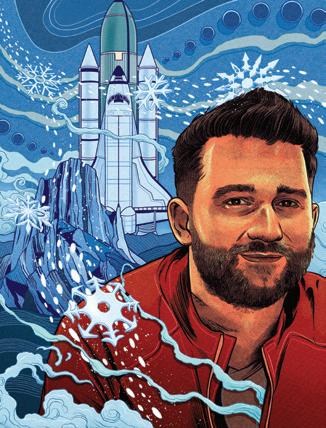
core, a closed cell foam that contains aerogel, and started constructing it into jacket prototypes, innovating and tweaking the technology year after year.
When contracts with commercial and government partners started ramping up about three and a half years ago, Nash decided it was time to accept Markesbery’s and Venna’s offer to become Oros’s third fulltime employee.“It took vetting the material, vetting the opportunity, and vetting Michael and Rithvik as founders,” says Nash from his home in Park City, Utah, where he leads the company’s technology team. “We’re not making a better version of something. We’re introducing something new to the market.”
Everyone did a little bit of everything in the beginning, Nash says, but today the three have distinct roles. Nash stays focused on improving the Oros technology and sustainability. Venna oversees operations, finances, and marketing, while Markesbery runs investment relations and company cul-
be around minus-300 degrees Fahrenheit, but the temperature inside the jacket won’t be affected. “There were at least two trade shows last year where Michael and I blasted each other like 50 times,” says Nash, laughing. “It’s a crowd pleaser.”
Markesbery has always had a way with people, says his mother, a warm personality she thinks could possibly have been developed at dinner parties the family hosted or attended during his childhood. The Markesberys moved to Indian Hill to live on the same street as two of Maria’s siblings. She wanted her children to grow up with an extended family, as she had.
At those parties, the Markesberys would encourage their children to sing a song from school or do something to entertain the guests. “I do think that helps build confidence, both in later presentations and just in talking with adults,” says Maria. As he got a little older, Michael began entertaining with magic tricks around the table.
In October 2022, at the grand opening of an Oros pop-up shop in Chicago, Maria Markesbery caught her son performing a magic trick for a group of little girls and had to smile. Always the showman, she remembers thinking.
were tinkering with aerogel technology for thermal performance, he recalls, but it wasn’t popular.





“At The North Face, we had started using aerogels in blankets,” says Nash. “It performed very well, but I couldn’t get factories to want to work with it because it was nondurable, it was dusting, and it would shed. Factories didn’t want to cut it or sew with it. Even though the performance was good, the material wasn’t suitable for consumer products or the apparel industry.”
Markesbery and Venna were already thinking through the problem when Nash got introduced to the duo via a colleague, another Miami alum. He was working as a consultant and agreed to advise the energetic budding entrepreneurs.
Markesbery had noticed that a lot of products—including wet suits, soft-sided coolers, and shoes—used closed cell foam to insulate from the cold. With Nash’s help, he and Venna developed and patented Solar-
ture. “It’s a very collaborative process, and we leave our egos at the door,” says Nash. “Michael is really good at knowing what he knows and what he doesn’t know, and he has an amazing ability to connect with people to seek guidance, listen to all of the influence out there, and act.”
Markesbery says it’s as simple as having a hypothesis and testing it. “If it’s right, you keep going,” he says. “If it’s wrong, OK, now you have a new piece of data that allows you to reformulate your hypothesis and try again.” His mantra? “Science the shit out of everything you do.”

WHETHER IT’S ON A STAGE IN FRONT OF acrowd at a conference in Australia or in the early days back in the Miami campus labs, one of Markesbery’s favorite ways to validate Oros technology is to put someone in one of his jackets and blast them with liquid nitrogen. It was one of his earliest experiments. The jacket’s surface temperature will
Oros invested in the store to raise brand visibility and to study the Chicago market, says Michael Markesbery. He invited Kathy Thornton, an astronaut who went to space four times in the 1980s, to do a Q&A with him at the store for inspiration and to connect with the community.
Markesbery has an ability to build connections and trust with lots of different sorts of people, says Holcomb, his Miami adviser. The Oros advisory board includes a current outerwear company executive, a retired U.S. Army colonel, consumer marketing experts, financiers, and more. “Michael is really good at disarming you with his smarts, drawing you in, but never making you feel stupid,” says Holcomb. “He does it with kindness, he does it with humility, and he’s coachable.”
All of these qualities have helped Markesbery form lasting relationships with his colleagues and the Oros board, Holcomb says. Markesbery passes on the credit. “The best thing we did is surround ourselves with a team and advisors who knew more about the various areas of our business than
“PEOPLE ARE AFRAID OF FAILURE,” SAYS MARKESBERY. “BUT IF YOU VIEW LIFE AS A SCIENCE EXPERIMENT,
IS NOT A NEGATIVE THING.”
did,” he says.

It hasn’t always been smooth sailing, says Holcomb, and he’s seen Markesbery weather multiple storms. Like the time Oros was days away from running out of cash or when a car plowed through the front of the company’s first office in Cincinnati. It wasn’t an easy decision to move to Portland, but the industry was out there, as were places to test their prototypes. “A lot of people would say, Eh, I don’t really need the best,” Holcomb says, “but Michael said he needed to go to Portland for the best talent because Nike, Adidas, Lululemon, and Under Armor all have major operations there.”
As Oros began to hit its stride, the COVID-19 pandemic closed the manufacturing facility where its products are made in China, so the company moved manufacturing to Vietnam. Vietnam shut down, and they moved to Guatemala.
But Markesbery and Venna kept pushing. They’re thrilled to have opened their own pilot aerogel manufacturing facility in Boston in 2022, giving them more control over day-to-day operations and the sustainability of Oros materials and production. Today, they’re closer than ever to achieving their original goal of creating a long-sleeved shirt that can be worn in below-freezing temperatures.
The new facility is rolling out fullscale prototypes of next-generation aerogels, their most flexible and durable yet, says Markesbery. Meanwhile, they’re looking to expand into cold chain packaging to keep things cold during transportation, like food and medicine. Solarcore technology recently went up in a Blue Origin flight to see if it could extend the life of batteries in space.
So many different scientific problems to solve, Markesbery says. Onward. “I have a fundamental belief that people are afraid of failure,” he says. “But if you view life as a science experiment, failure is not a negative thing.”
From the beginning, Venna says he and Markesbery bonded because they have similar values and believe great things don’t come easily but result from hard work. They changed the name of their company to Oros because it means “mountain” in ancient Greek.

“In order to do something big, like summit a mountain, you have to sacrifice everything—blood, sweat, time, money—and give it your all to actually achieve that outcome,” says Venna. “Michael and I believe that wholeheartedly.”
MARKESBERY LIKES PORTLAND. HE loves the food scene and access to his outdoor hobbies, which include skiing, kite boarding, and mountaineering. He’s learning to fly a plane.
As “terrible” as he thinks it sounds, he wants to fly a fighter jet someday— another goal since childhood. A Google search says it costs about $300,000, but step one is a private pilot’s license. He recently flew over the mouth of the Columbia River and says he enjoys the sky-high perspective.
What he misses most about Cincinnati is family, Markesbery says. He was recently struck by a video he “probably shamelessly saw on TikTok” about time being fleeting. The guy in the video asks, “Hold old are your parents?” to which someone replies, “Sixty.” They do the math on average lifespan and the average number of times you see your parents each year. “If my answer is four [times a year] and my parents are 60, that’s something like 80 more times we’ll see one another before they die,” says Markesbery.“I need to visit more often.”
So he’ll try to find time to come here between meetings with investors, business partners, and elected officials holding the military purse strings; amid trade shows and conferences; and while trying to nail down the remaining $10 million of his latest round of Series B fund-raising. Because grit applies to family roots, too.
That brings us back to Saba’s questions for his grandson. The second was more of a request, really, to recite something in Arabic. The first was always, “What is your name?”
Asked about that question’s significance, Markesbery consults with his mother about what his grandfather had meant. “She thinks he was really asking, Who do you want to be today?” he says. His answer was always “Michael.”
He knows he’s a work in progress, but he’s never wanted to be anyone else.




FOR A HANDFUL OF NIGHTS IN OCTOBER DURING THE BLINK FESTIVAL,CINCINNATI had something like its own Chinatown or Koreatown—those culturally dense neighborhoods in larger cities where Asian populations congregate. The Asianati Night Market lured in locals and tourists alike with a bevy of heavenly smells, glowing lanterns, and family-friendly games. Displays from the Lucky Cat Museum and nearly a dozen food vendors transformed Court Street into a glowing showcase of the city’s Asian American businesses, artists, and people.

The force behind the event, Asianati, has woven itself into the fabric of Cincinnati’s growing Asian American community. Producing a restaurant directory, a blog, and events, the organization is linked to just about every corner of the city, and it’s set to grow. “Other cities have Asian towns,” says Bao Nguyen, cofounder and developer of Asianati. “Cincinnati, we don’t quite have an Asian town, but we have a fair amount of Asians in the area, and Asianati kind of serves as your virtual Asian town.”

It all began with a spreadsheet and notes on a napkin. About five years ago, Nguyen met with Koji Sado, a Procter & Gamble executive who had a spreadsheet of all the restaurants where he’d eaten around town.
“He wanted to find a cool way to highlight that, showcasing things people in the area might not know about,” Nguyen explains. “I’m a software developer, and we figured between his resources [and] my resources, we could put together some kind of directory. Then, as we brainstormed, more features came about, such as the blog and events.”
The restaurant directory remains a key function of the site, and it’s a solid basis for the organization’s
Upcoming Asianati events include the Asian Food Fest, which returns to Court Street Plaza April 29 & 30 to kick off Asian and Pacific Islander Heritage Month in conjunction with Asian American Cultural Association of Cincinnati. For more information about the organization, visit asianati.com.
entire premise because, Nguyen says, “everybody loves food.”
Of course, Asianati only begins with a great meal. It goes on to fuel community support, engagement, and education.
“Asianati is about celebrating culture and connections,” says Sado, the cofounder. “We want to continue to make connections. We want to have people be open to learning about Asian culture and what Greater Cincinnati can offer.”
The organization officially launched in fall 2020, during the height of the pandemic, and Sado and Nguyen’s efforts made lasting connections, leading to rapid, organic growth. Volunteers quickly appeared, eager to support the evolving organization. A team of approximately 10 volunteers serve as the group’s backbone, but events bring in even more hands, expanding the group’s reach. (It now offers internships to give local college students real-world experience.) Everything they put into the community has inspired a reciprocal generosity of spirit.
“We knew we wanted to grow through word of mouth because we thought that was going to have the most impact,” Sado says.
The Night Market did that on a grand scale. It brought fresh eyes and opportunities to Asianati, putting the team in touch with other Cincinnati-area organizations eager to tap into and share the magic captured at the community event. It was also a dream come true for the organizers.
“The Night Market was something we were envisioning from the very beginning, so it was a big milestone for us,” Sado says. “Our intent was to offer an immersive experience of an Asian night market. The biggest thing for me was about a week after the market, one of my colleagues came up to me and said, ‘Yeah, I went to
your Night Market and it was great. My son, when visiting, said “Mommy, are we in China? Are we in Asia?”’ That made my day. That’s when I felt like, yeah, we made an impact.”
While Sado, who’s lived and worked all over the world, grew up enjoying night markets, the BLINK event hit Nguyen differently. “I recently had a kid and it was nice to be able to do a family event,” Nguyen says. “I grew up in Cincinnati, and I didn’t really get a chance to experience [night markets], especially as a mainstream event.”
Not a team to rest on its laurels, the Asianati crew is hard at work planning events for this year. Meetups will bring together small groups of people who are interested in learning about Asian culture in a fun, informal setting. Seasonal activities will include the Japanese springtime tradition of hanami, or flower viewing, which encourages participants to picnic under the cherry blossoms in Ault Park.
There’s always another event in the works, and the restaurant directory is only growing. However, Sado and Nguyen have some very long-term goals.


“Eventually, it would be nice to have a physical Asian town,” Nguyen says, “areas with quite a few, concentrated Asian restaurants and businesses, and an event center where we could host various Asian cultural events.”
“That was one of the first reasons Bao and I got together, to create an Asian town,” Sado agrees.
They’ve already influenced significant change in the community, helping Cincinnati keep one of its most valuable resources: people.
“When I was in college, a lot of my Asian friends were trying to move to the bigger cities to take part in communities that had more Asians and more Asian events,” Nguyen recalls. “Everyone kept on leaving. Since then, that whole attitude is gone. I know a lot of my friends back then probably would have stayed if they had this.”
THE KENTUCKY KITCHEN IS ITS OWN THING. IT’S NOT SOUTHERN COOKING OR NORTHERN cooking, but Kentucky cooking. And Y’all Café is ready to set that record straight. If you’re here for breakfast, you don’t even have to look at the menu. Go right for the 2 Biscuits to Paradise. As anybody who’s ever read a Wendell Berry story knows, biscuits are the manna of the Bluegrass. You get two big ol’ buttermilk biscuits. And you can’t tell if they were drowned or crushed under the weight of that thick sausage gravy. There’s an egg, too, but in Kentucky, it’s considered just garnish for the biscuits. The restaurant also has healthy breakfast fare, like homemade granola and even a selection of smoothies. But that’s for the folks you bring along who don’t understand what breakfast really is. In Kentucky, lunch is “dinner” and dinner is “supper,” since the big meal is often at lunchtime. The River Side Hot Brown will hold you beyond supper with smoked turkey and bacon covered in a housemade cheese sauce on sourdough. Add sweet potato fries and people think you’re actually conscientious about your diet. And if you can’t quite navigate all that, the French onion soup and a glass of iced tea will fill you up good. Whatever you get here, it’ll be a meal that’d make Uncle Jesse from Hazard proud.
 —J. KEVIN WOLFE
—J. KEVIN WOLFE
Y’all Café, 50 E. Rivercenter Blvd., Covington, (859) 292-1699, yallcaferivercenter.com
When and how did you get into your current career? After 12 years with my previous employer, I knew I had to go out on my own and start the brand that I had always dreamed of creating.
How do you describe your cooking/food style? At my core, I’m a Southern cook but I love to explore creative, new flavors. I collect cookbooks and food magazines, and love nothing more than flipping through the pages to find inspiration.

What’s your best-selling item?
Pimento cheese. It was the first product I launched and went to market with and continues to be the bestseller. It’s my grandmother’s recipe that I worked for many years to perfect. She never wrote the recipe down and passed away when I was in college. It’s more than just pimento cheese to me; it’s memories of time spent with my grandmother, learning, making, and being with her in her kitchen.
Have any secrets for good party hosting you’d like to share? Before my guests arrive, everything is set up, the food is ready to serve, candles are lit, and the music is on. I greet my guests with a signature cocktail or glass of good wine and give them my full attention.
AIESHA D LITTLEIn the Curious Kitchen, inthecuriouskitchen.com
Read a longer interview with MK at cincinnatimagazine.com
Small corner stores that sling sandwiches, snacks, and an assortment of grocery items—colloquially known as bodegas—dot the landscape across parts of New York City, a sign of significant Latinx populations. Queens native (by way of Colombia) Jose Salazar has recreated the stores of his upbringing with Daylily Deli. Last summer, the owner of Mita’s, Salazar, and Goose & Elder partnered with Deeper Roots Coffee to open the store on a grocery-barren block of Columbia-Tusculum with smashing results.
“It’s a community that has needed a grocery store for a very long time,” says Sami Stewart, Daylily’s general manager, of the east side neighborhood. “We’re trying to be a store that gets the community’s legitimate needs. I think it’s special because we’re trying to do something simple in an excellent way.”
Salazar is on deck in the kitchen, cooking up breakfast and lunch specials with a little New York flavor. If you want a Big Appleinspired lunch classic, look no further than the chopped cheese sandwich, a hoagie full of ground beef, sauteed onions, American cheese, banana peppers, lettuce, and tomato, topped with a special sauce. For breakfast, the Egg on a Roll (two eggs and American cheese on a roll or bagel) with an added order of ham, goetta, or bacon is the way to go. Finish up with an egg cream coffee soda, a carbonated chocolate drink made

with chilled espresso, Fox’s U-Bet chocolate syrup, milk, and seltzer.
Those running in for supplies will find locally sourced items like goetta and thick-sliced bacon from Eckerlin Meats and bagels supplied by The Bagelry as well as regional Ohio products. In addition to grocery staples, the store offers a fullservice, all-day coffee bar, featuring iced lattes, drip coffee, and specialty drinks from Deeper Roots. There are also two beers and two wines on tap.

Daylily relies on community feedback to determine new items to stock, a job that Stewart takes seriously (she initially did product research by attending town meetings and using the staff’s own experiences as reference).

“Trying to make decisions that make sense for the community is admittedly very hard,” she notes. “You have to think about this from a lot of different perspectives and angles to make it make sense for everybody.”

TO SAY FAHID “FRANK” DAOUD HAD strong ties to our region would be a grave understatement. As one of the founders of Gold Star Chili, he and his brothers undeniably changed Cincinnati’s culinary DNA and later brought the city’s famous chili to the Middle East. Daoud was a world traveler, cherishing his visits to Brazil, Spain, and countries across the Mediterranean. While coneys and ways aren’t on the menu at Frankie’s Sips & Savories, everything served at the downtown wine bar founded by his children is like a culinary travel diary. The Mediterranean arancini is fried to a crisp on the outside with soft risotto and tender spiced lamb on the inside and served atop fluffy whipped feta. The menu’s fresh stuffed pitas serve as a nod to Daoud’s home in Jordan.
Stay a while and have a glass of Spanish or Italian wine, or opt for a signature cocktail like the Aseel, made with Arak liqueur—a distilled Levantine spirit made with anise—triple sec, ginger ale, Pedro Jimenez sherry vinegar, lemon, and fresh mint. Head for the tropics with the Lauderdale, a bubbly rum cocktail with raspberry puree, lime, mint, and club soda. Then there’s the Vixen, a sweet and tart gin cocktail with pomegranate molasses and rosemary served straight up.
Stop in for Tequila Tuesday, Wine Down Wednesday (half-off bottles of wine!), and happy hours throughout the week to indulge in a sensory trip around the world. And raise a glass to Frank—we’re sure he’ll be toasting you right back.
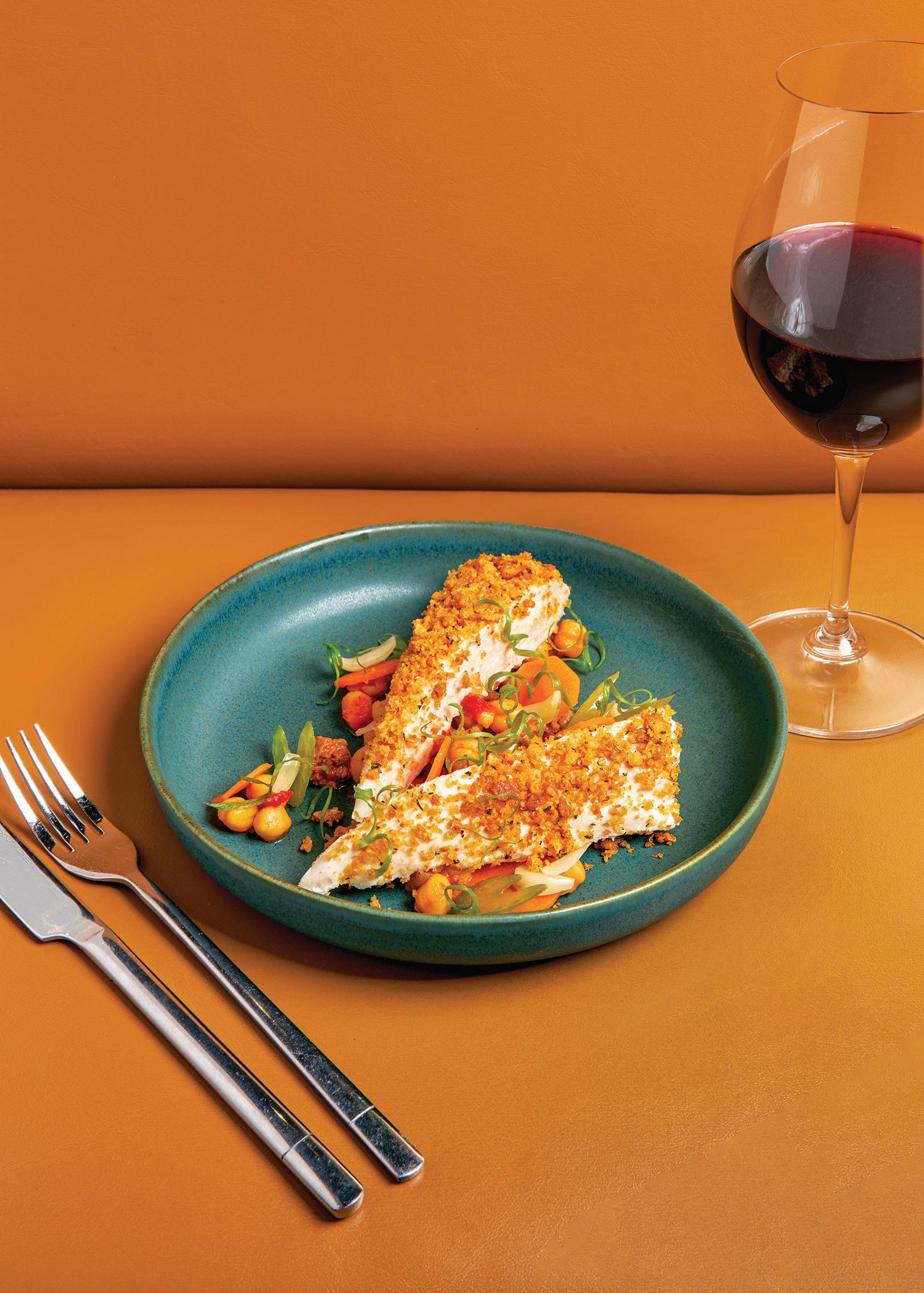

 —SAM ROSENSTIEL
—SAM ROSENSTIEL
Frankie’s Sips & Savories, 14 Garfield Pl., downtown, (513) 996-0021, frankiessips.com
This wine bar pays tribute to one Gold Star founder’s global appetite.
dining guide is compiled by our editors as a service to our readers. The magazine accepts no advertising or other consideration in exchange for a restaurant listing. The editors may add or delete restaurants based on their judgment. Because of space limitations, all
of the guide’s restaurants may not be included. Many restaurants have changing seasonal menus; dishes listed here are examples of the type of cuisine available and may not be on the menu when you visit.
To update listings, e-mail: cmletters@cincinnati magazine.com
You might think this is a lunch-only spot where you can nosh on a chicken salad sandwich after browsing next door at Joseph-Beth Booksellers. But this Norwood eatery feels welcoming after work, too. The dinner menu features entrées beyond the rotating soup and quiche roster that’s popular at noon. Mac and cheese? Check. Quesadillas and other starters? Yep. An assortment of burgers? Present, including a grilled portobello option. Casual food rules the day but the surprise is Brontë Bistro’s lineup of adult beverages, which elevates the place above a basic bookstore coffeeshop. The regular drinks menu includes such mainstays as cosmopolitans and sidecars. 2692 Madison Rd., Norwood, (513) 396-8970, josephbeth.com. Breakfast, lunch, and dinner seven days. MCC. $
On a visit to England, Jan Collins discovered the “cozy” atmosphere of London restaurants built in historic houses. She brought that warm, comfortable feeling back to the United States in opening Cozy’s. Though the atmosphere in the restaurant is reminiscent of Collins’s London travels, the food remains proudly American. The produce in virtually every dish is fresh, seasonal, and flavorful. The braised short rib stands out with its cheesy grits and haystack onions along with a portion of tender meat. And when it comes down to the classics, from the biscuits that open the meal to carrot cake at the end, Cozy’s does it right.
6440 Cincinnati Dayton Rd., Liberty Twp., (513) 644-9365, cozyscafeandpub.com. Lunch and dinner Tues–Sat, brunch Sat & Sun. MCC. $$$
Back in the streetcar days, this roughly 100-yearold roadhouse was at the end of the Dixie Highway line, where the cars turned around to head north. The place was called the Dixie Tea Room then, and they served ice cream. The fried chicken came along in the 1930s, and they’re still dishing it up today. Families and regulars alike pile in
Cincinnati is ranked sixth among the 20 best places in the nation for beer lovers, according to SmartAsset. The financial technology company compared 393 cities across the country based on total number of breweries, breweries per 100,000 residents, the average number of beers per brewery, bars per 100,000 residents, and the average price of a pint. smartasset. com/data-studies/ best-cities-for-beerdrinkers-2022-edition

on Mondays and Tuesdays for the fried chicken dinner. While the juicy (never greasy) chicken with its lightly seasoned, crisp coating is the star, the side dishes—homemade biscuits, cole slaw, green beans, mashed potatoes, and gravy—will make you ask for seconds. Call ahead no matter what night you choose: There’s bound to be a crowd. Not in the mood for chicken? Choose from steaks, seafood, sandwiches, and comfort food options that include meatloaf and a Kentucky Hot Brown. Or just try the onion rings. You’ll wonder where onions that big come from. 2500 Dixie Highway, Ft. Mitchell, (859) 3313767, greyhoundtavern.com. Lunch and dinner seven days, brunch Sat & Sun. MCC, DS. $$
The menu here generally doesn’t reinvent dishes or introduce outlandish flavors, but simply pays attention to enough little things to make the results unusually good. The Wagyu is served in cheeseburger form, but the exceptional tomme from Urban Stead gives it that extra something. The cocktails are things you’ve probably seen before, but everything—from the Death Valley Old Fashioned to the Queen City’s Bees Knees—had an extra dash of liveliness from a house-made element, like a rhubarb honey syrup or the raspberry shrub. Even when an ingredient seems out of left field, like the burnt grapefruit hot sauce on the Hamachi, it never tastes as unusual as it sounds. The hot sauce is just a hint of sweet citrusy spice that melts into the grits—a softly intriguing element rather than a slap in the face. Ivory House also has an excellent brunch. 2998 Harrison Ave., Westwood, (513) 3890175, ivoryhousecincy.com. Dinner Tues–Sat, brunch Sun. MCC. $$$
Trio is nothing if not a crowd pleaser. Whether you’re in the mood for a California-style pizza or filet mignon (with roasted red potatoes, sauteed spinach, crispy onions, and a red wine demi glace), the menu is broad enough to offer something for everyone. It may lack a cohesive point of view, but with the number of regulars who come in seven nights a week, variety is Trio’s ace in the hole. A simple Margherita pizza with roma tomatoes, basil, Parmesan, and mozzarella delivered a fine balance of crunchy crust, soft
cheese, and sweet, roasted tomatoes. Paired with a glass of pinot noir, it made a perfect light meal. The service is friendly enough for a casual neighborhood joint but comes with white tablecloth attentiveness and knowledge. Combine that with the consistency in the kitchen, and Trio is a safe bet.
7565 Kenwood Rd., Kenwood, (513) 984-1905, triobistro.com. Lunch and dinner seven days. MCC, DC. $$
You’ll want to get to Bee’s Barbecue in Madisonville early if you want to avoid the line of friendly regulars. The restaurant’s smoker churns out a variety of meats—including brisket, pulled pork, ribs, turkey breast, and two kinds of sausage—so it’s easy to see why they keep coming back. If you enjoy the spicy grease that oozes out of a good chorizo, you’ll love the Cincinnati Hot Link, which tastes like the delicious love child of a chorizo and a hot mett. Word to the wise: Bee’s opens at 11 a.m. and closes when they run out of meat. Understandably, this doesn’t take long.
5910 Chandler St., Madisonville, (513) 5612337, beesbarbecue.com. Lunch and dinner Wed–Sat. MCC. $
You won’t leave this Texas smokehouse/sports bar hungry. From the brisket—served with Texas BBQ sauce, white bread, and pickles, or on toasted sourdough—to the chicken thighs, you can’t go wrong with these richly smoked flavors. Several dishes, like the Korean style pork belly, the pulled pork naan tacos, and Bigos stew, draw on global influences, while the sides take flavors back to the country (try the creamy coleslaw, the house-made mac and cheese, and chili-spiced cornbread). The restaurant’s character shines through its decor, which includes hanging hockey memorabilia, pictures of public figures and tables made from real NBA courts.
2062 Riverside Dr., East End, (513) 281-4355, sinsaintsmoke.com. Lunch Sat & Sun, dinner Tues–Sun. MCC. $$

















































































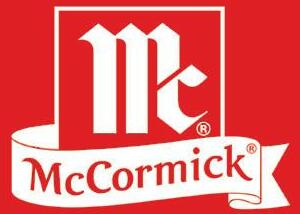


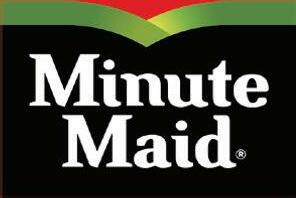








More than 800 miles from New Orleans, this may be as close as you can get to the real deal here in your own backyard. The menu fully leans into Chef Michael Shields’s penchant for cuisine from the Crescent City. His six years of training under NOLA’s own Emeril Lagasse comes through in a scratch kitchen menu that spans a range of the city’s classics. The enormous shrimp and oyster po’ boys—the former protein fried in a light and crispy beer batter and the latter in a hearty cornmeal breading—are served on fluff y French bread loaves and dressed with lightly spicy rémoulades. The jambalaya packs all the heat of a late summer day in the French Quarter without masking a hint of its satisfying flavors. Paired with a Sazerac and nightly live jazz, you may just feel tempted to start a second line.
4632 Eastern Ave., Linwood, (513) 861-2484, brewrivercreolekitchen.com. Dinner Tues–Sun, brunch and lunch Sat & Sun. MCC. $
The Pine serves some of the best Louisiana homestyle food you’ll find this far north of New Orleans. Taste the fried catfish filets with their peppery crust, or the garlic sauteed shrimp with smoky
greens on the side, and you’ll understand why it’s called soul food. Between March and June, it’s crawfish season. Get them boiled and heaped high on a platter or in a superb crawfish etouffee. But the rockin’ gumbo—a thick, murky brew of andouille sausage, chicken, and vegetables—serves the best roundhouse punch all year round. As soon as you inhale the bouquet and take that first bite, you realize why Cajun style food is considered a high art form and a serious pleasure. And you’ll start planning your return trip.
6302 Licking Pke., Cold Spring, (859) 7812200, theknottypineonthebayou.com. Dinner Tues–Sun. MCC, DS. $$

The chilies-on-steroids cooking here will have you mopping beads of garlic-laced sweat from your brow. The musky, firecracker-red Mongolian chicken stabilizes somewhere just before nirvana exhaustion, and aggressively pungent shredded pork with dried bean curd leaves your eyes gloriously glistening from its spicy hot scarlet oil. Even an ice cold beer practically evaporates on your tongue. Do not fear: not all the dishes are incendiary. Try the seafood—lobster, Manila clams, Dungeness and blue crabs, whelk, and oysters— prepared with tamer garlicky black bean sauce, or ginger and green onions. The Cantonese wonton soup, nearly as mild as your morning bowl of oatmeal, is as memorable as the feverish stuff. Sliced pork and shrimp are pushed into the steaming bowl of noodles and greens just before serving. Think comforting, grandmotherly tenderness.
11042 Reading Rd., Sharonville, (513) 5636888, chineseimperialinn.com. Lunch and dinner seven days. MC, V, DS. $
When Mike and Helen Wong opened Oriental Wok in 1977, the couple wanted to recreate the glamor and refinement of the Hong Kong-Cantonese cuisine they knew. Today, locals and expats alike enjoy authentic Chinese and Chinese-American dishes in dining rooms reminiscent of Beijing. Beyond the elephant tusk entryway and fish ponds and fountains is the warmth and hospitality of the Wong family, service on par with the finest establishments, and very, very good food. Best are the fresh fish: salmon, grouper and sea bass steamed, grilled or fried in a wok, needing little more than the ginger-green onion sauce that accompanies them. Oriental Wok is the tri-state’s longest-running family-owned Chinese restaurant for a reason.
317 Buttermilk Pke., Ft. Mitchell, (859) 331-3000; 2444 Madison Rd., Hyde Park, (513) 871-6888, orientalwok.com. Lunch Mon–Fri (Ft. Mitchell; buffet Sun 11–2:30), lunch Tues–Sat (Hyde Park), dinner Mon–Sat (Ft. Mitchell) dinner Tues–Sun (Hyde Park). MCC. $$
Like many Chinese restaurants that cater to both mainstream American and Chinese palates, this strip mall gem uses two menus. The real story here is found in dishes of pungent multi-layered flavors that set your mouth ablaze with fermented peppers and fresh chilies and then just as quickly cool it down with the devilish, numbing sensation of hua jiao, Sichuan pepper. Its numbing effect is subtle at first: appetizers of cold sliced beef and tripe, as
Breakfast fave Sugar n’ Spice closed its doors temporarily last fall as owner Adam Mayerson began an overhaul of the Paddock Hills restaurant, which will add 1,200 square feet of dining space. The renovated space is scheduled to reopen this summer.

well as slices of pork belly with a profusion of minced garlic, lean toward the hot and sweet; mapo tofu freckled with tiny fermented black beans and scallions, and pork with pickled red peppers and strips of ginger root, progress from sweet to pungent to hot to salty—in that order. Alternated with cooling dishes—nibbles of rice, a verdant mound of baby bok choy stir-fried with a shovelful of garlic, refreshing spinach wilted in ginger sauce, a simply sensational tea-smoked duck—the effect is momentarily tempered.
7888 S. Mason Montgomery Rd., Mason, (513) 770-3123, sichuanbistro.com. Lunch and dinner Tues–Sun. MCC, DS. $$
Top 10 BOCA
With its grand staircase, chandelier, and floorto-ceiling draperies, Boca has an atmosphere of grandeur and refinement. There is a sense of drama not only in the decor but in everything it serves. In some dishes, there is a painterly sense of contrast and surprise, like violet-derived purple sugar beside the pain de Gênes (French almond cake). In others, there is a dramatic suspense, like the whole egg yolk quivering in the center of the Fassone tartare waiting to be broken. While staying mostly grounded in the fundamentals of Italian and French cuisine, Boca has an air of international sophistication that sets its food apart. The hamachi crudo, an old standby on the menu, takes Japanese flavors and gives them new dimensions with grapefruit suprêmes and slivers of shishito pepper. This is food of extraordinary creativity and flair.
114 E. Sixth St., downtown, (513) 542-2022, bocacincinnati.com. Dinner Mon–Sat. MCC, DS. $$$
Sacred Beast advertises itself as a kind of upscale diner, but the real gems are the oddball dishes that don’t quite
fit the diner mold. The menu can be disorienting in its eclecticism: foie gras torchon is next to fries with lobster gravy, and a king salmon is next to a diner breakfast and deviled eggs. Winners are scattered throughout the menu in every category. On the cocktail list, the Covington Iced Tea, a lemon and coffee concoction made with cold brew, San Pellegrino, and vodka is oddly satisfying. The service is good, and there is some flair about the place—including vintage touches, from the facsimile reel-to-reel audio system to the mostly classic cocktails—even within its rather chilly industrial design. In short, go for the unique grub; stay for the elegant, shareable twists on classic snacks.
1437 Vine St., Over-the-Rhine, (513) 213-2864, sacredbeastdiner.com. Lunch and dinnerWed–Sun. MCC. $$
A freewheeling tour through Korean, Moroccan, Italian, and French flavors—and that’s just on one iteration of the ever-evolving menu. Salazar turns out fresh, wellbalanced dishes dotted with seasonal surprises: the cauliflower steak special (a Moroccan spiced, seared wedge of the cruciferous vegetable complemented by a strong hit of lemon), the chicken liver mousse (so good it deserves its own trophy), and the succulent chicken Milanese (with its musky, sweet-and-sour notes of ground cherry). With its bustling bar and cheek-by-jowl tables, Salazar hums with energy at every meal.
1401 Republic St., Over-the-Rhine, (513) 621-7000, salazarcincinnati.com. Dinner Mon–Sat, brunch Sat & Sun. MCC. $$
Ever since it began dishing out its lo-fi eats, Chef Dan Wright’s gastropub has been operating at a velocity few can match. From the howl and growl of supremely badass hot dogs to the palate-rattling poutine, Senate has led the charge in changing the local conventional wisdom about what makes a great restaurant. Consumption of mussels charmoula means either
ordering additional grilled bread to soak up every drop of the herby, saffron-laced broth or drinking the remainder straight from the bowl and perfectly crisped and seasoned fries inspire countless return visits.

1100 Summit Place Dr., Blue Ash, (513) 769-0099, senateblueash.com. Lunch and dinner Tues–Sun. MC, V, DS. $

Jean-François Flechet’s waffle empire grew from a back counter of Madison’s grocery at Findlay Market to multiple full-service sit-down spots. There’s more on the menu than the authentic Belgian treat, though it would be a crime to miss the chicken and waffles: a dense, yeasty waffle topped with a succulent buttermilk fried chicken breast, Frank’s hot sauce, and maple syrup. There are also frites, of course, and Brussels sprouts—served with pancetta and sherry vinaigrette—plus a gem of a Bolognese. And let’s not forget the beer. Five rotating taps offer some of the best the Belgians brew, not to mention those made in town.
1133 Vine St., Over-the-Rhine, (513) 381-4607, and other locations, authenticwaffle.com. Breakfast and lunch Mon–Sat, dinner Tues–Sat, brunch Sun. MCC. $
Based on American stereotypes of French food—that it’s elaborate, elitist, and expensive—one might expect Chez Renée to fall on the chichi side. Instead, it’s elegant in an everyday way, operating on the principle that it is better to excel at simplicity than to badly execute something complicated. The formula is not complex: Simple ingredients, generally fresh and from nearby, prepared without much fuss. Warmed brie is served with thyme, almonds, fruit, and bread, and the chicken risotto is served with creamy mushrooms. This is solid, tasty food,

Utmost quality has long been a pillar of pride for our Meat & Seafood department.

Meats, such as DLM Natural Beef, are always lifetime free of added hormones and antibiotics.


Seafood is sourced direct from fi shing co-ops, families, and farms, resulting in minimum time spent out of water.



Oakwood (937) 299-3561
Washington Square (937) 434-1294
Springboro (937) 748-6800
both approachable and well executed. It’s well on its way to becoming, as a good bistrot should be, a neighborhood institution.
233 Main St., Milford, (513) 428-0454, chezreneefrenchbistrot.com. Friday–Sat and dinner Wed–Sat. MCC. $$








If it’s been a couple of years since you’ve been to Le Bar a Boeuf—Jean-Robert de Cavel’s fun-yet-refined French bistro located on the first floor of the Edgecliff Private Residences in East Walnut Hills—it may be time for a revisit. The formerly burger-centric menu now approaches the full repertoire of bistro classics. The menu reads like a greatest hits list of bistro fare, with escargot, beef tartare, duck leg confit, steak frites, and French onion soup all making appearances. As France’s influence on American fine dining has waned, it’s refreshing to see a restaurant committed to not only preserving the French classics but reinvigorating them.

2200 Victory Pkwy., East Walnut Hills, (513) 751-2333, barboeuf.com. Dinner Tues–Sat. MCC. $$






























cuisine, but with a sizable Orthodox Jewish community nearby, Muthia saw an opportunity: If he was going to cook vegetarian, why not also make it kosher? Muthiah prepares every item— from the addictively crunchy gobhi Manchurian, a spicy Chinese cauliflower dish, to the lemon pickle, tamarind, and mint sauces—entirely from scratch under the careful eye of Rabbi Michoel Stern. Always 80 percent vegan, the daily lunch buffet is 100 percent animal-product-free on Wednesdays. Tuck into a warm and savory channa masala (spiced chickpeas) or malai kofta (vegetable dumplings in tomato sauce) from the curry menu. Or tear into a crispy, two-foot diameter dosa (chickpea flour crepe) stuffed with spiced onions and potatoes.
7633 Reading Rd., Roselawn, (513) 821-2021, ammaskitchen.com. Lunch buffet seven days (all-vegan on Wed), dinner seven days. MC, V, DS.
$



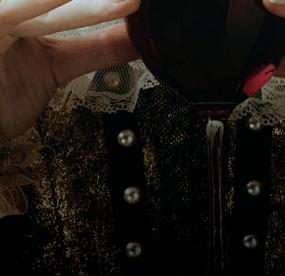






Order at the counter the way you might at a fast food joint, except the shakes come in mango and there’s no super-sizing your mint lassi. The saag, full of cream in most northern Indian restaurants, is as intensely flavored as collard greens in the Deep South—real Punjabi soul food. Tarka dal is spectacular here, the black lentils smoky from charred tomatoes and onions, and the pani puri, hollow fried shells into which you spoon a peppery cold broth, burst with tart cool crunch. Follow the spice with soothing ras malai, freshly made cheese simmered in thick almondflavored milk, cooled and sprinkled with crushed pistachios.
11259 Reading Rd., Sharonville, (513) 7694549, brijmohancincinnati.com. Lunch and dinner Tues–Sun. MC, V, DC, AMEX. $










As with all of Thunderdome’s restaurants, you get a sense that they want to deliver a meal that satisfies many different kinds of people. The prices are reasonable, with pasta entrées about $15. The dishes are familiar in their flavors, but everything feels balanced and modulated and gradually perfected. There is lovely variety: the limone pasta is zippy with lemon and chili flakes, and just the right mixture of tart and creamy; the deep meaty flavors on the mushroom toast are balanced with a nice acidity; and the heat in dishes like the eggplant involtini is just enough to wake up the sauce without overwhelming the flavor. The menu has a wealth of excellent vegetarian and pasta-alternative options.
1501 Vine St., Over-the-Rhine, (513) 419-1820, peppanddolores.com. Lunch Fri–Sun, dinner Mon–Thurs. MCC. $$
There are certain books and movies that you can read or watch over and over. Eating at Sotto is a similar experience: familiar, but so profound and satisfying that there is no reason to ever stop. Unlike other restaurants, where the techniques are often elaborate and unfamiliar, the magic at Sotto happens right in front of you, using ordinary elements and methods. When you taste the results, though, you realize that some mysterious transmutation has taken place. Penne with rapini and sausage comes in a buttery, lightly starchy broth with a kick of spice that you could go on eating forever.

Thanks to a partnership with Madisono’s Gelato, you can once again catch a favorite on the Gold Star menu. The chili spot recently brought back its milkshakes after pulling them from the menu last winter due to supply chain issues. Same price point, same great taste!

goldstarchili.com

From the texture of the chicken liver mousse to the tart cherry sauce on the panna cotta, most of the food has some added element of soulfulness.
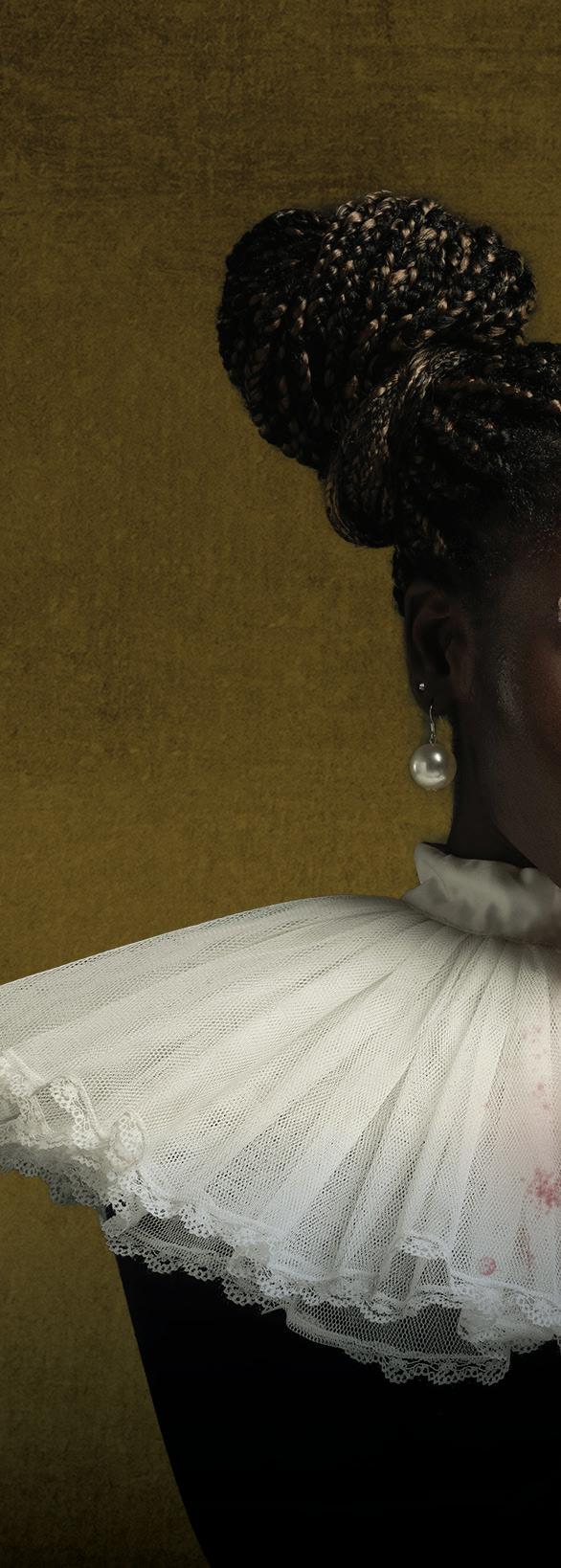
118 E. Sixth St., downtown, (513) 977-6886, sottocincinnati.com. Dinner seven days. V, MC, DS, AMEX. $$

Via Vite serves up crowd-pleasing entrées, including the Pietoso family Bolognese, over penne, right on Fountain Square. (Add in a golf-ball-sized veal meatball heavy with lemon zest, and it’s an over-the-top comforting main dish.) The same applies to the risotto, where a few small touches add sophistication. Carnaroli rice results in a glossier, starchier dish. A puree of asparagus turns the risotto an eye-popping green, and the poached lobster garnish creates a nice back-and-forth between vegetal and briny flavors. Braised lamb shank over polenta is comforting workhorse, and the flavorful Faroe Island salmon with roasted carrot puree, caramelized Brussel sprouts and truffled brown butter balsamic vinaigrette.
520 Vine St., downtown, (513) 721-8483, viaviterestaurant.com. Dinner Mon–Sat. MCC, DS. $$
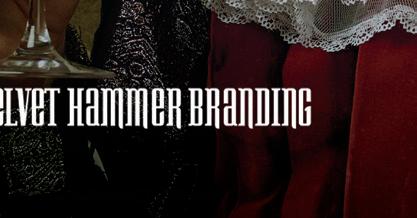











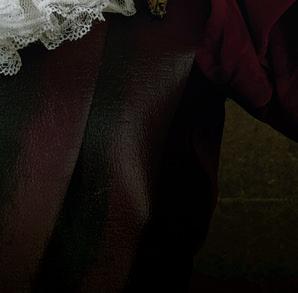


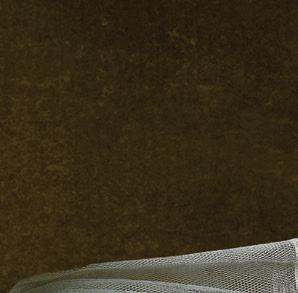












wannabes. The only thing you won’t find here is sake, or any other alcohol. Bring your own, or stick to the nutty and outright addicting barley tea.


5889 Pfeiffer Rd., Blue Ash, (513) 791-8687, andojapaneserestaurant.com. Dinner Tues–Sat. MCC. $$$

Owner Jason Shi seems to know everybody’s name as he chats up diners, guiding them through the extensive sushi and sashimi menu. Five young sushi chefs, all part of Shi’s family, work at light speed behind the bar, a choreography backlit by rows of gleaming liquor bottles. Dinner proceeds with glorious chaos as a feisty Carla Tortelli–like server delivers one dish after another—slivers of giant clam on ice in a super-sized martini glass, a volcanic tower of chopped fatty tuna hidden inside overlapping layers of thin avocado slices, smoky grilled New Zealand mussels drizzled with spicy mayo, and delicate slices of a samurai roll—all between shots of chilled sake.
12082 Montgomery Rd., Symmes Twp., (513) 583-8897, kyotosushibar.com. Lunch and dinner seven days. MCC. $$








You don’t go just anywhere to dine on uni sashimi (sea urchin) or tanshio (thinly sliced charcoal-grilled beef tongue). Don’t miss the rich and meaty chyu toro (fatty big-eye tuna), or the pucker-inducing umeshiso maki (pickled plum paste and shiso leaf roll). Noodles are also well represented, with udon, soba, or ramen options available. And don’t forget to ask about the specials; owners Ken and Keiko Ando always have something new, be it grilled koji or marinated amberjack smoked salmon crudo, delicacies that you’ll be hard-pressed to find in any of those Hyde Park pan-Asian
After the closing of Sung Korean Bistro, Haru is a welcome addition to the downtown scene. Dishes are served along with the usual Korean accompaniment of pickles, kimchi, fish cakes, and other mysteriously delicious dainties. A favorite is the japchae, a traditional dish sporting silky sweet potato noodles with sesame-and-garlic sauce, matchsticks of assorted crisp vegetables, and behind it all a wonderful smokiness that pervades the whole meal. The accompanying pot of gochujang, a fermented Korean chili paste, adds its own sweet and spicy note. The result is a homey, soulful, and satisfying taste that appeals even to those who’ve never
eaten a bite of Korean food before.
628 Vine St., downtown, (513) 381-0947, harucincy.com. Lunch and dinner Mon–Sat. MCC. $$


Come for the jo gi mae un tang—a bowl of sizzling, happy hellbroth pungent with red pepper, garlic, and ginger, crowded with nuggets of fish, tofu, and vegetables. Come for the restorative power of sam gae tang, a chicken soup for the Seoul—a whole Cornish hen submerged in its own juices and plumped with sticky rice and ginseng, dried red dates, and pine nuts. Revered for their medicinal properties, both dinner-sized soups will leave your eyes glistening and your brow beaded with sweat. They’re a detox for your overindulgence, rejuvenation for when you’re feeling under the weather. Expect crowds on weekends. Expect too, that dozens of them have come for dolsot bibimbap, the hot stone pots filled with layers of rice, vegetables, meat or tofu, egg, and chili paste. Characterized by its electric color and addictive flavors, Riverside Korean’s version is a captivating bowl of heaven.
512 Madison Ave., Covington, (859) 291-1484, riversidekoreanrestaurant.com. Lunch Tues–Fri, dinner Tues–Sun. MCC, DS. $$

CINCINNATI MAGAZINE, (ISSN 0746-8 210), February 2023, Volume 56, Number 5. Published monthly ($19.95 for 12 issues annually) at 1818 Race St., Ste. 301, Cincinnati, OH 45202. (513) 421-4300. Copyright © 2023 by Cincinnati Magazine LLC, a subsidiary of Hour Media Group, 5750 New King Dr., Ste. 100, Troy, MI 48098. All rights reserved. No part of this magazine may be reproduced or reprinted without permission. Unsolicited manuscripts, photographs, and artwork should be accompanied by SASE for return. The magazine cannot be held responsible for loss. For subscription orders, address changes or renewals, write to CINCINNATI MAGAZINE, 1965 E. Avis Dr., Madison Heights, MI 48071, or call 1-866-660-6247. Periodicals postage paid at Cincinnati, Ohio, and additional mailing offices.

Postmaster: Please send forms 3579 to CINCINNATI MAGAZINE, 1965 E. Avis Dr., Madison Heights, MI 48071. If the Postal Service alerts us that your magazine is undeliverable, we have no further obligation unless we receive a corrected address within one year.

KROHN CONSERVAtory exists somewhere beyond the natural boundaries of place and season, in a space where marigolds spring up in the dying days of fall and tulips bloom well before the dawn of spring. It’s no small feat to make such floral miracles happen. But the jewel of Eden Park has an ace up its sleeve: a nursery that supplies nearly 40,000 potted plants to local parks each year. Formerly part of a farm in Finneytown, Warder Nursery was donated to the Cincinnati Park Board in the 1930s and converted over the years to produce a city’s worth of greenery. In its heyday, the nursery produced all the plants for Cincinnati Parks, according to Krohn Conservatory Manager Mark House. By the 1960s, when it was no longer cost effective to grow all of the parks’ trees and shrubs locally, Warder pivoted to greenhouse work exclusively. It’s still a mammoth undertaking for a team of just two horticulturists, who tend to thousands of potted plants each year to keep up with demand—a task that requires strict daily maintenance and expert foresight, all to make the final product look perfectly effortless.
 —LAUREN FISHER
—LAUREN FISHER























